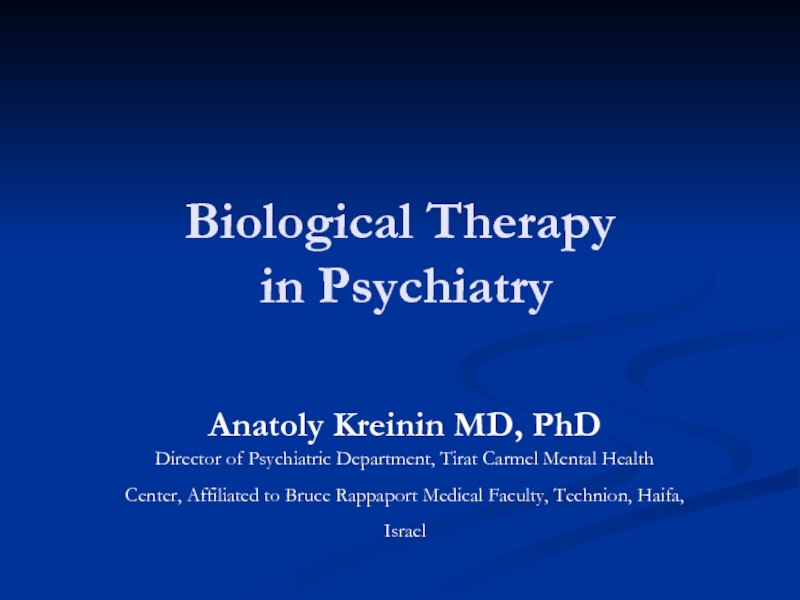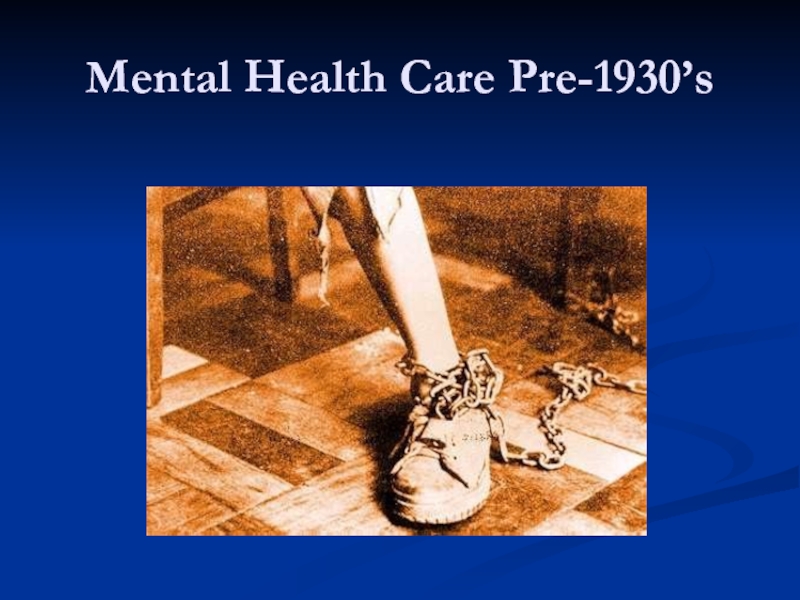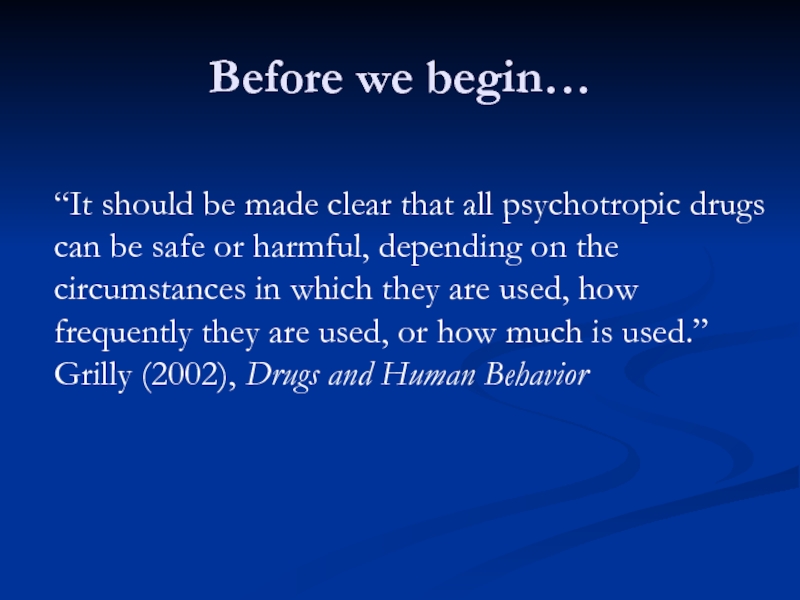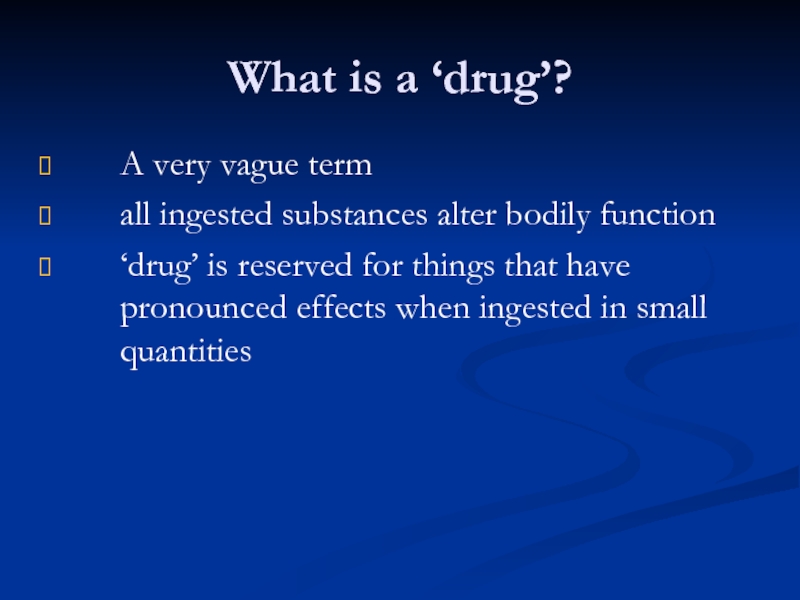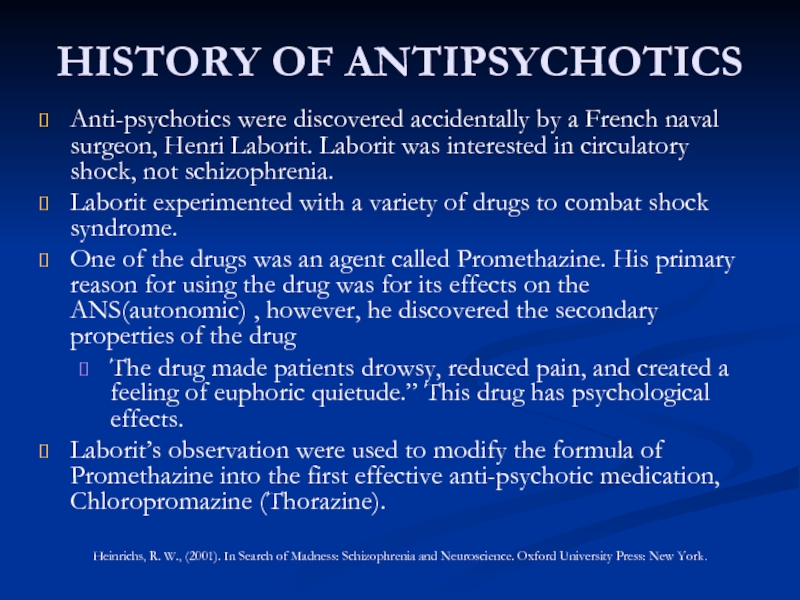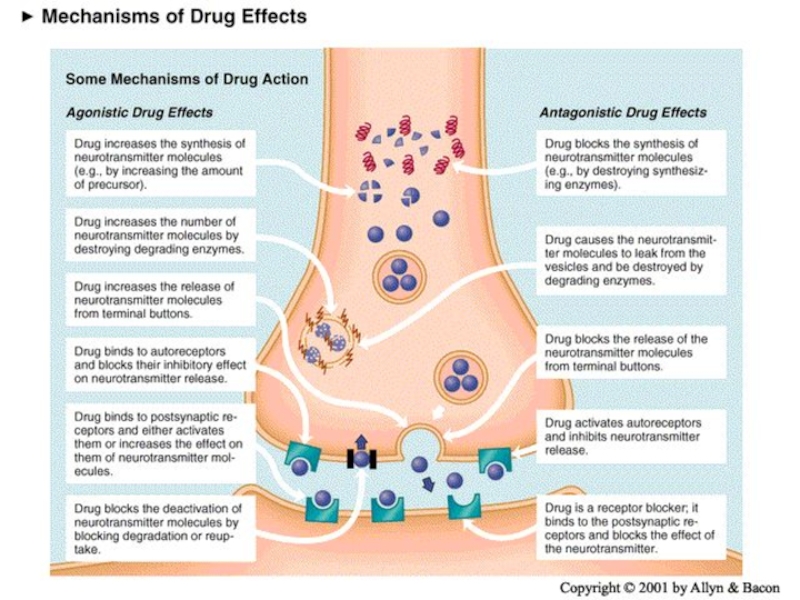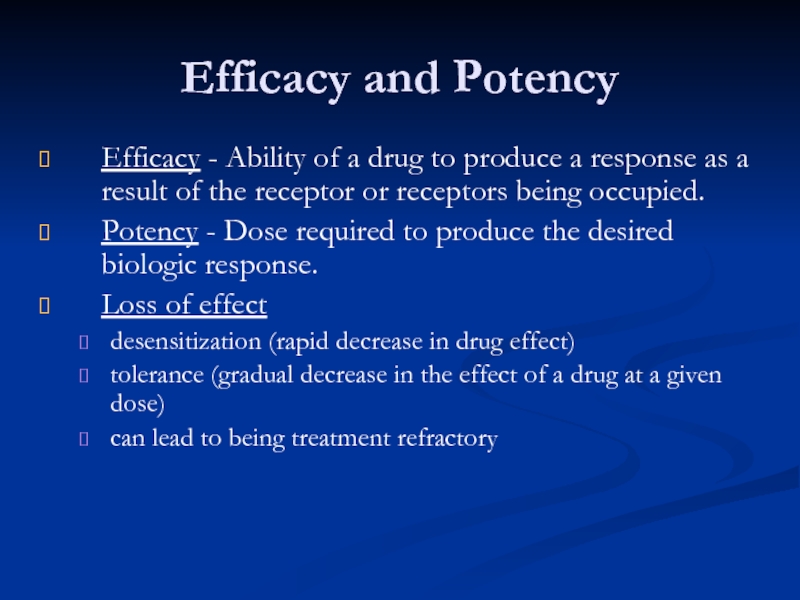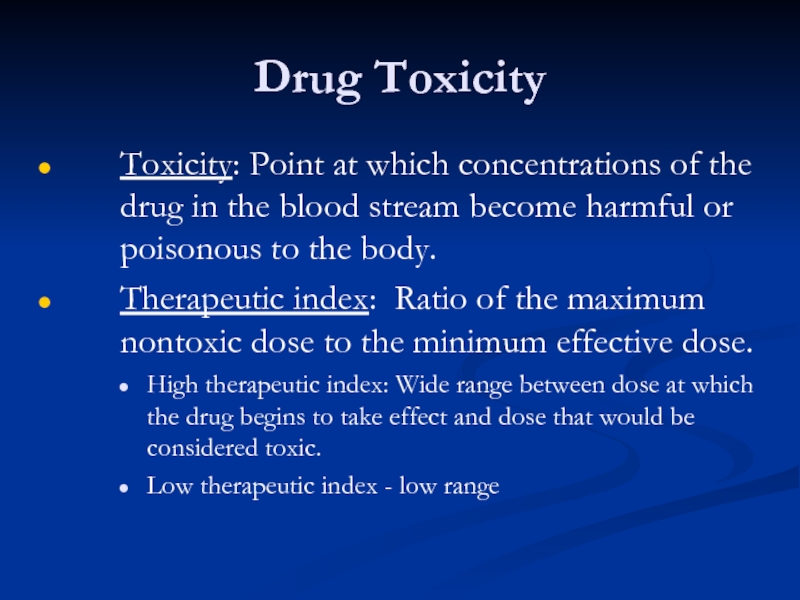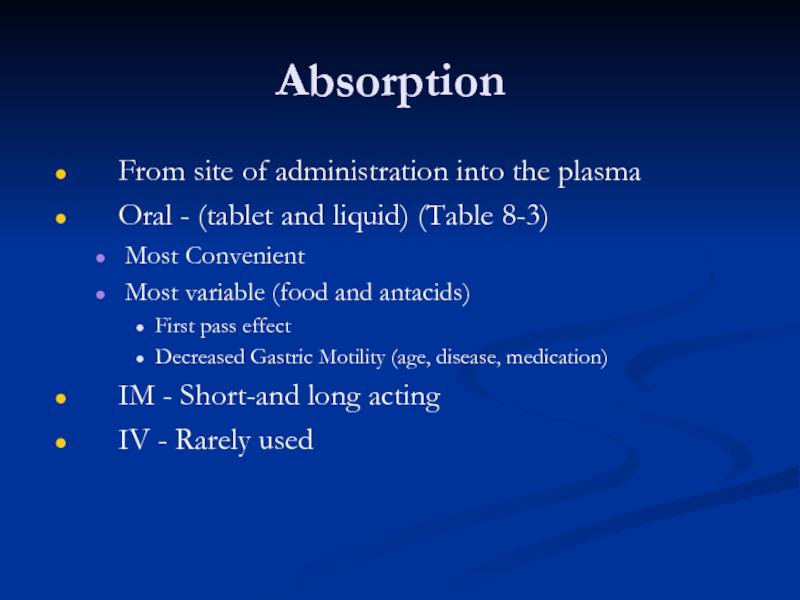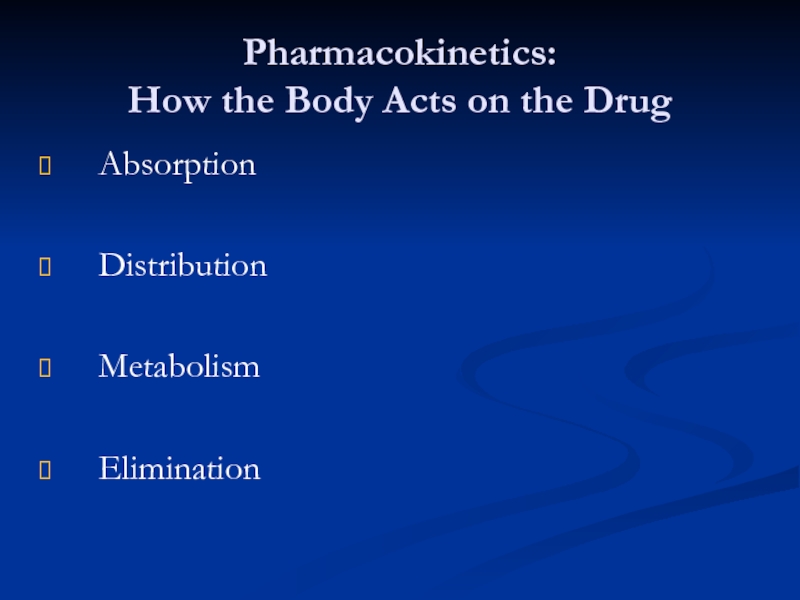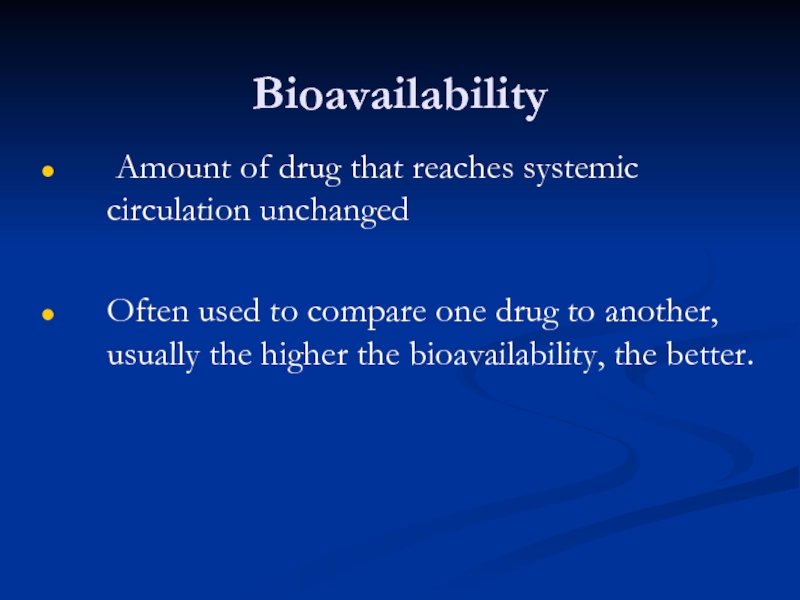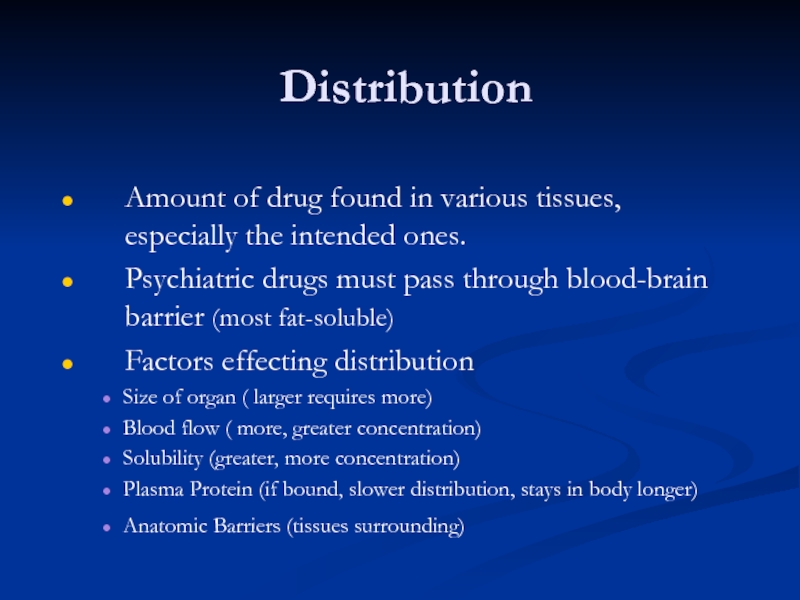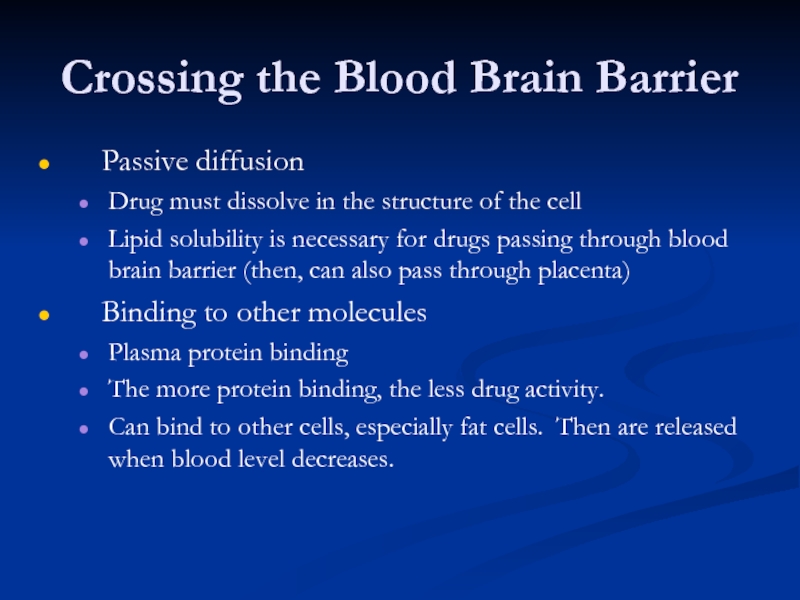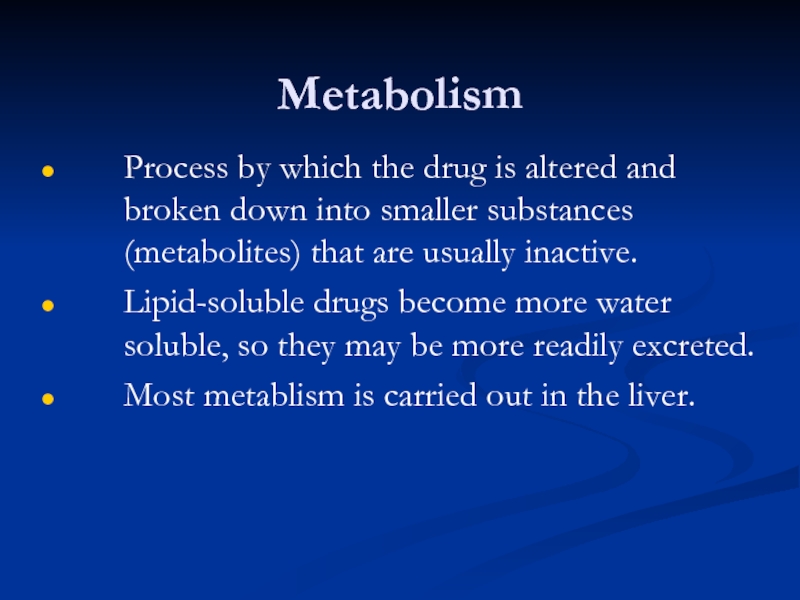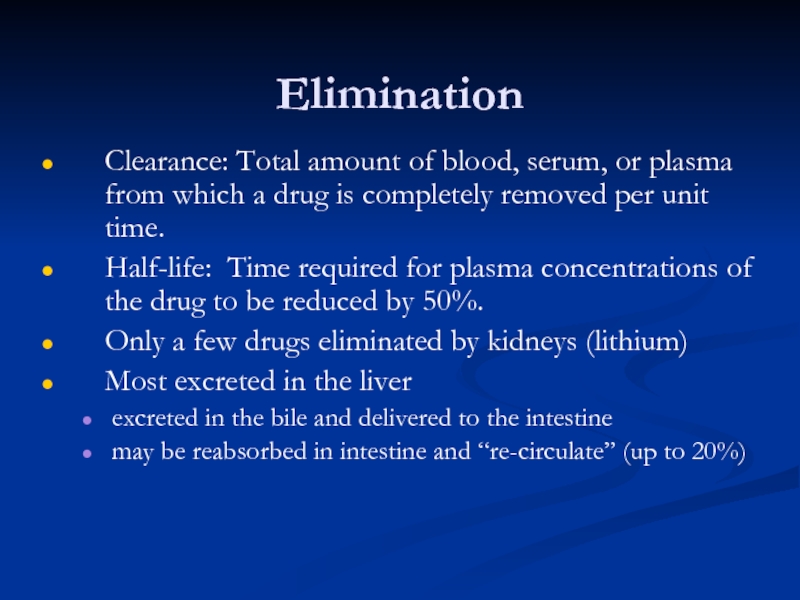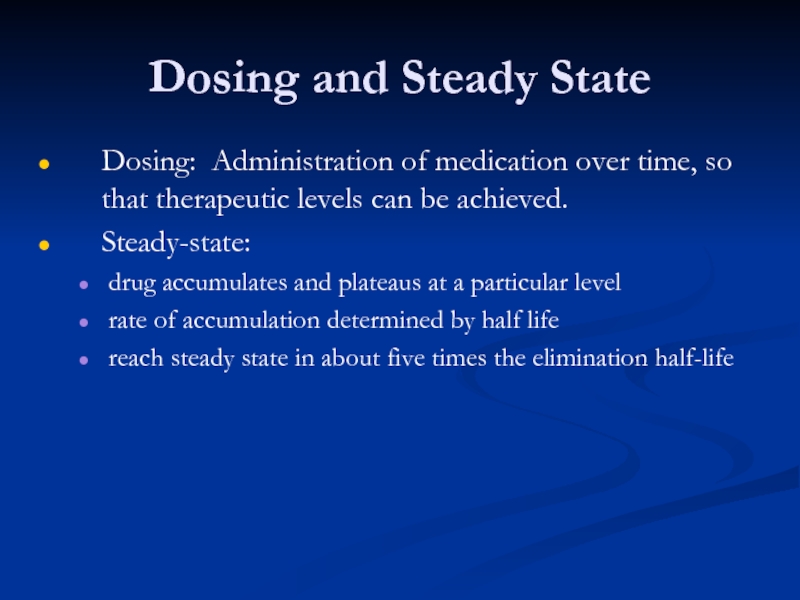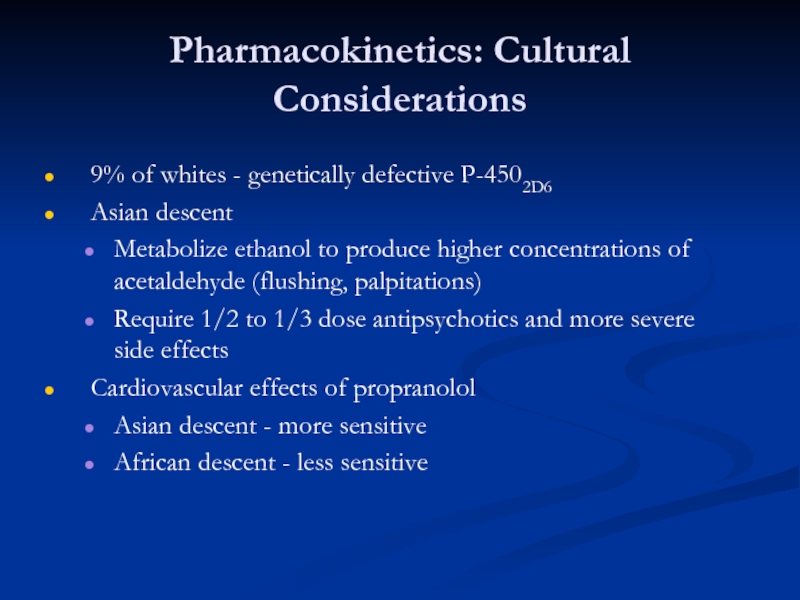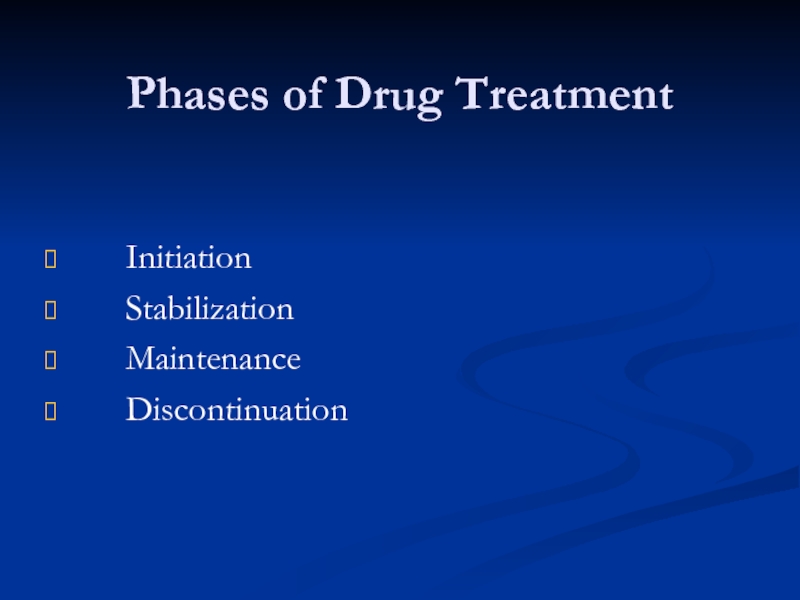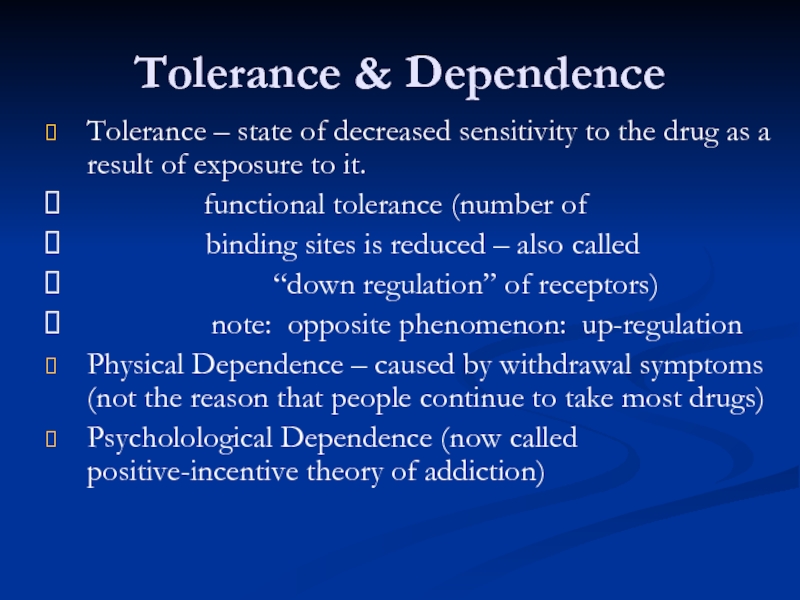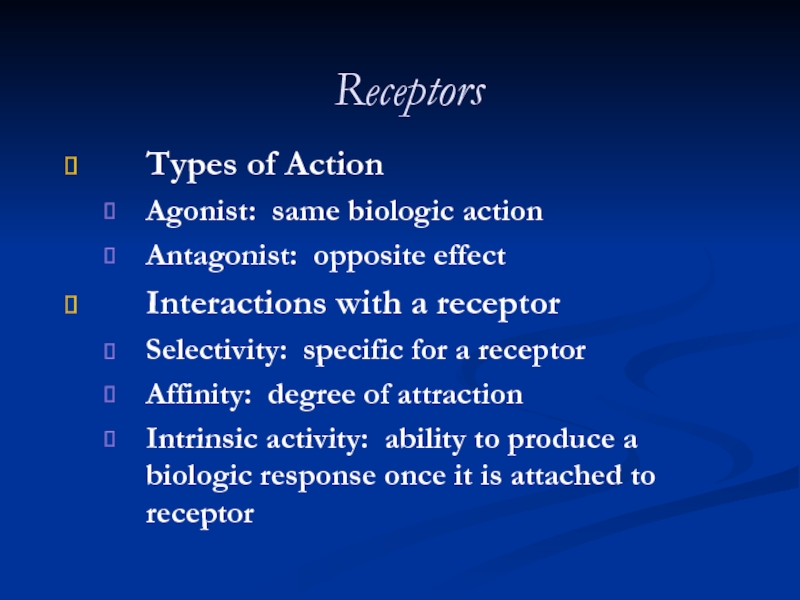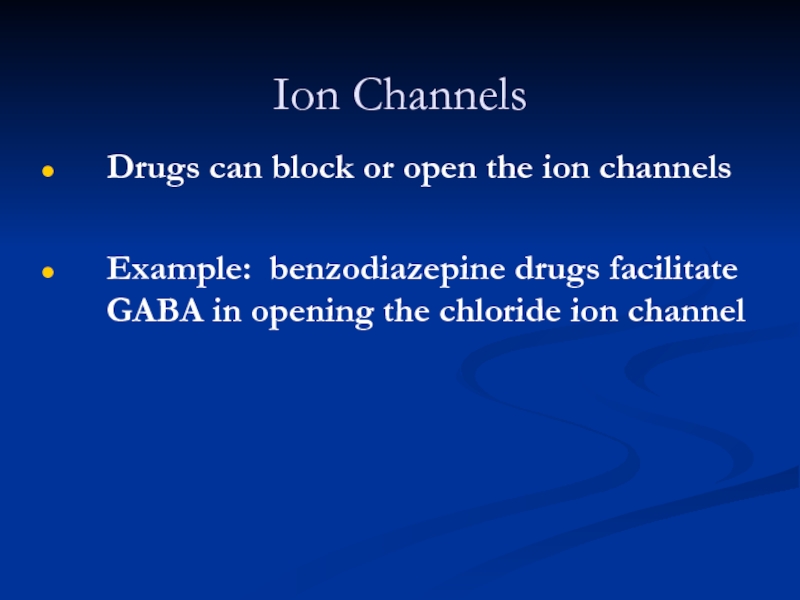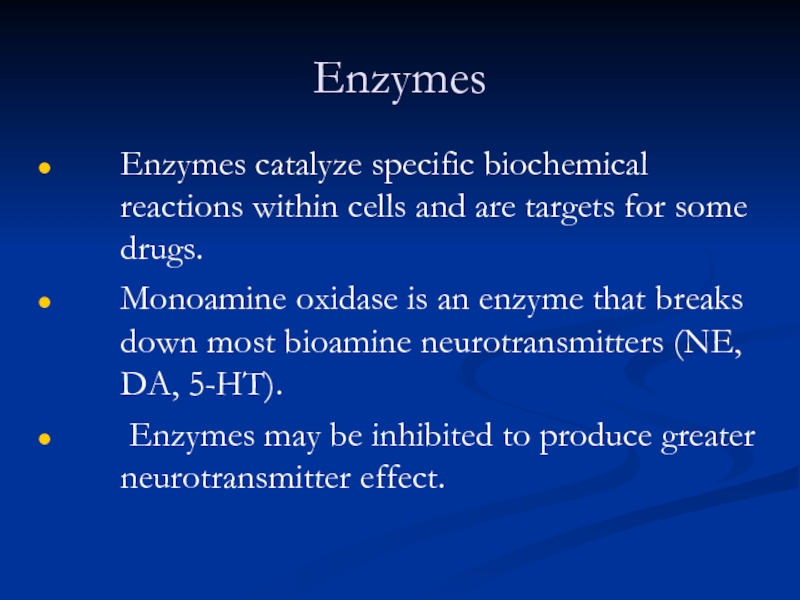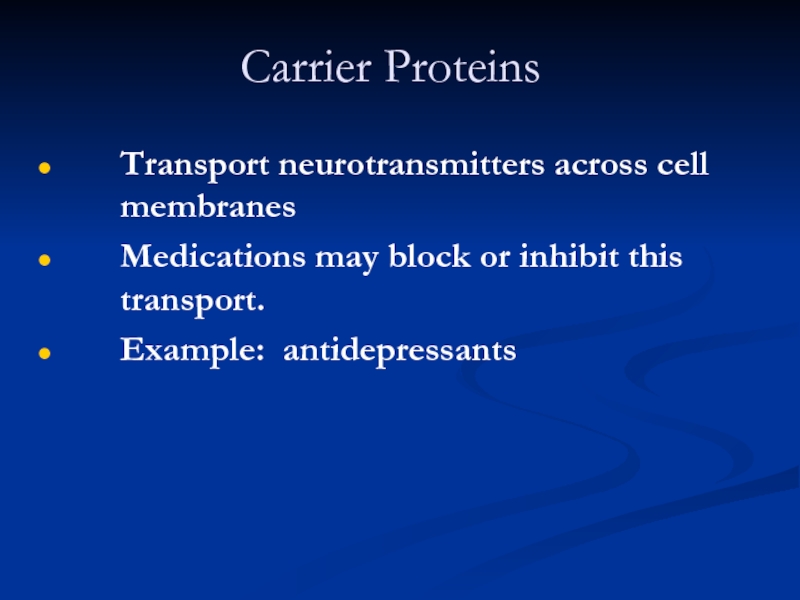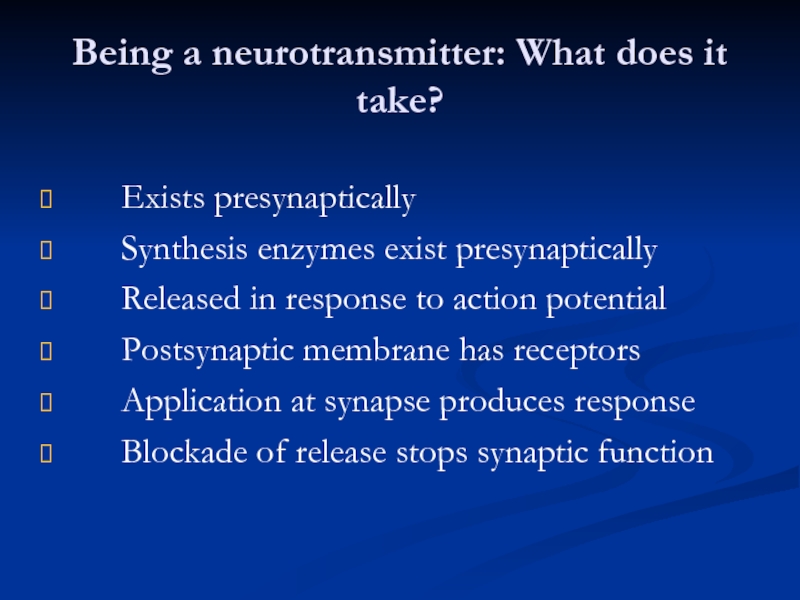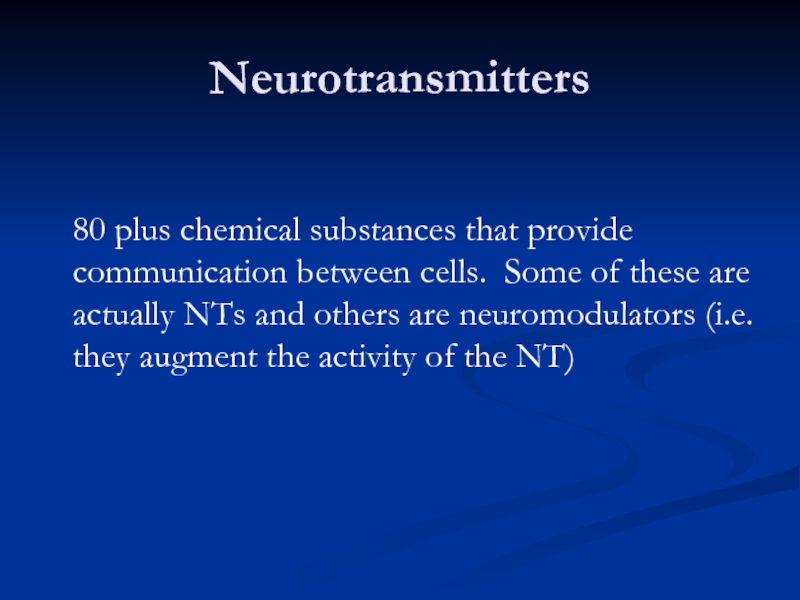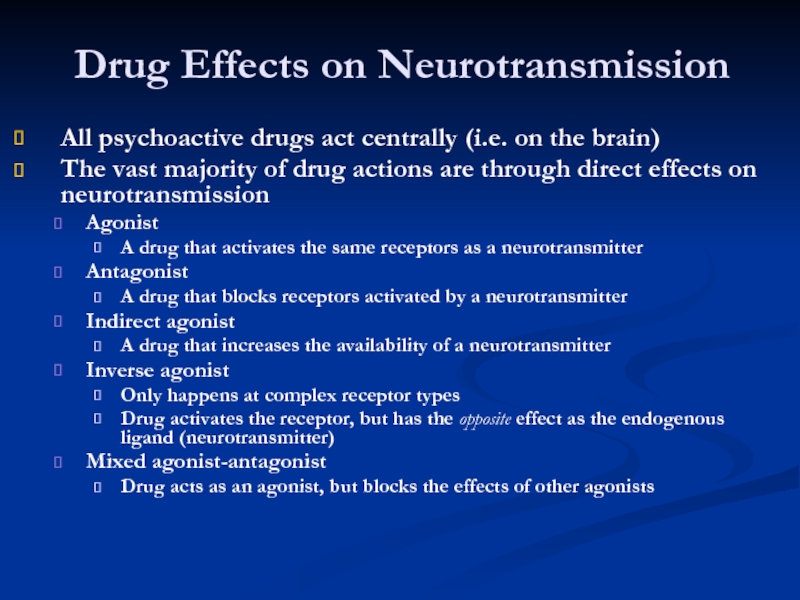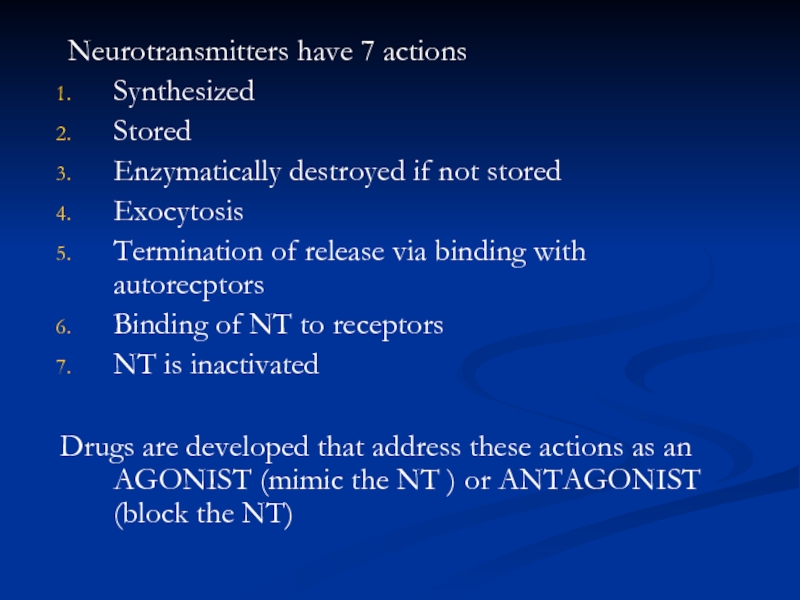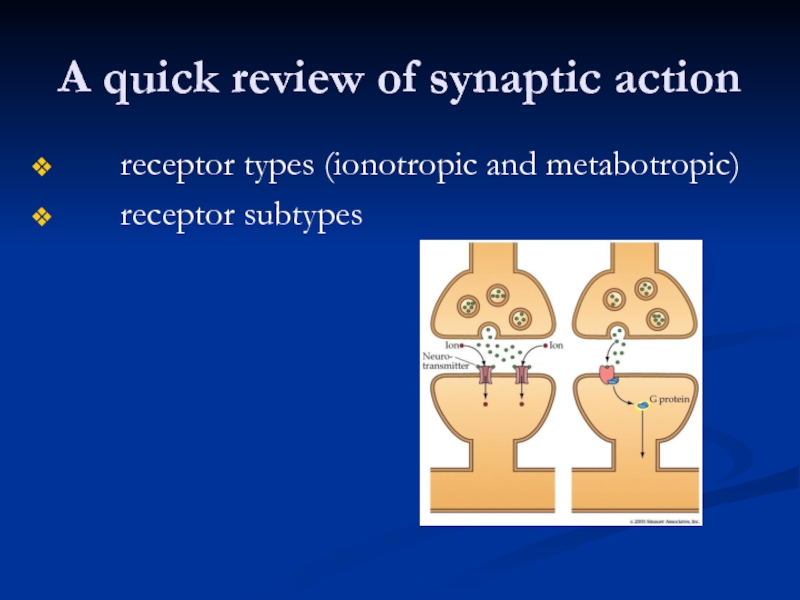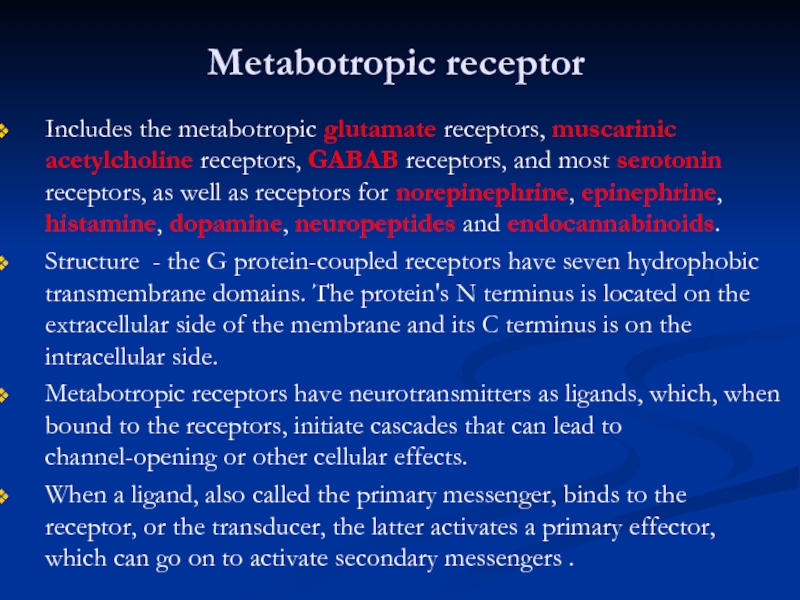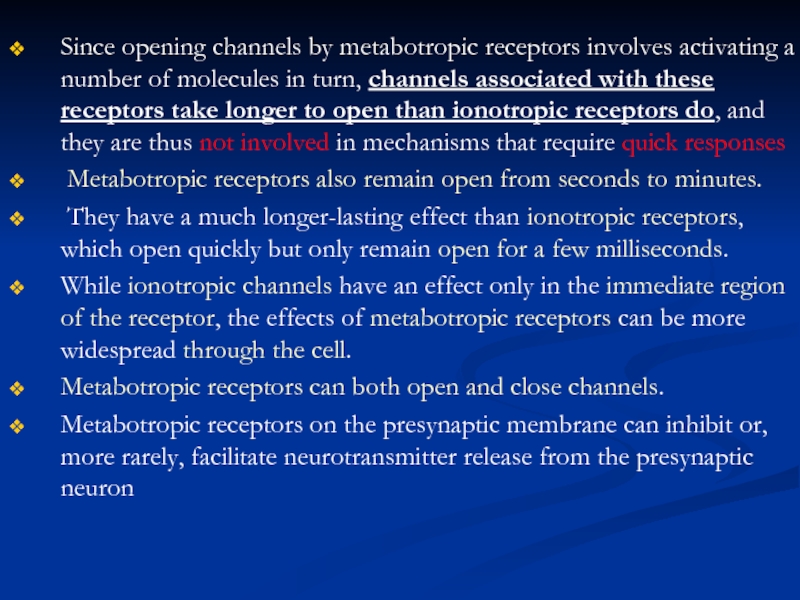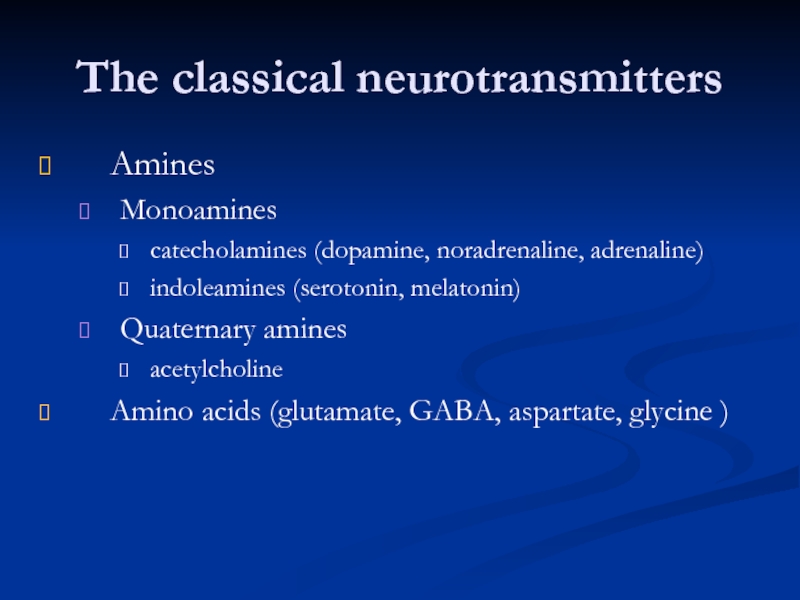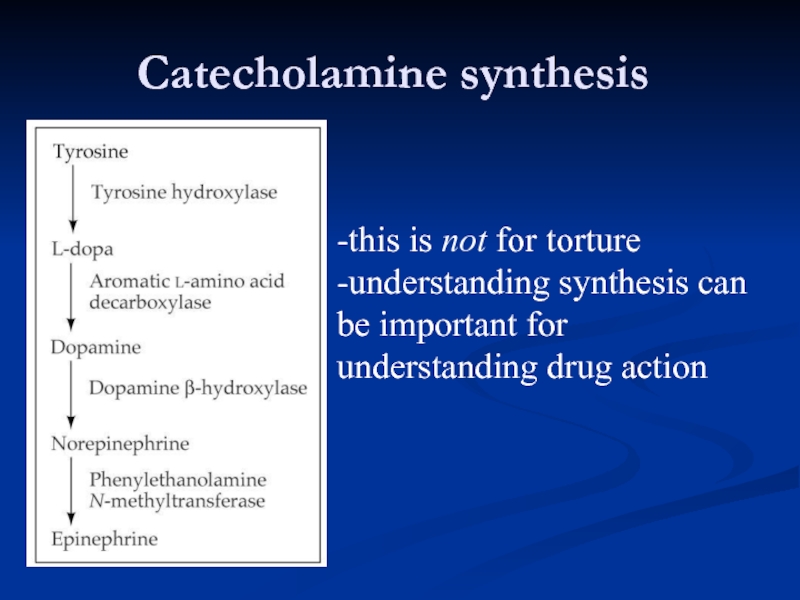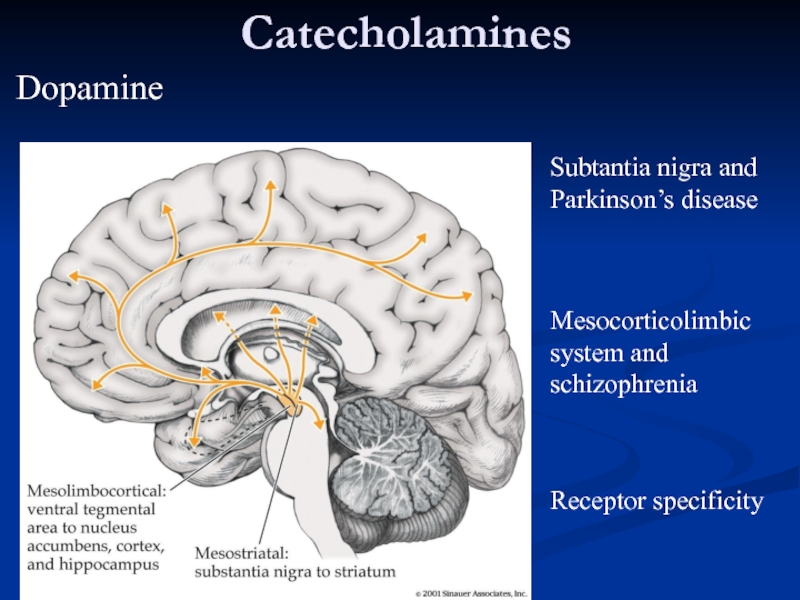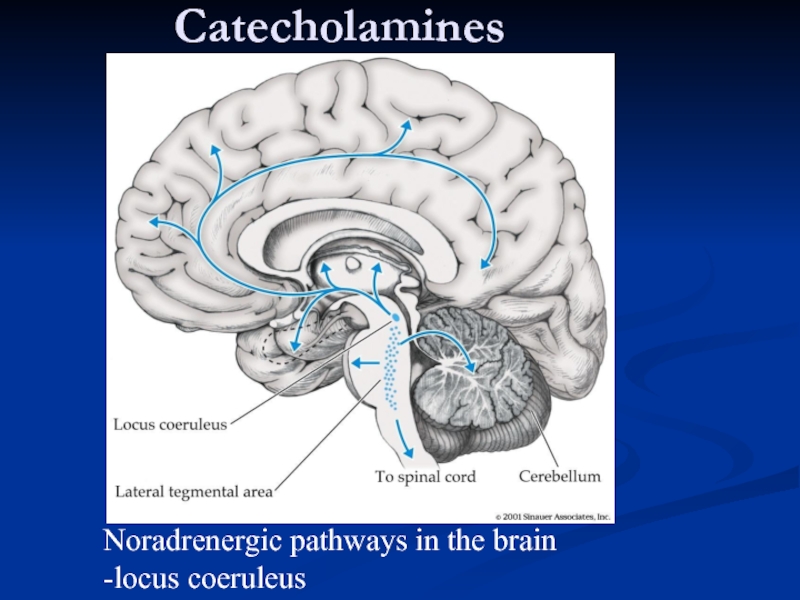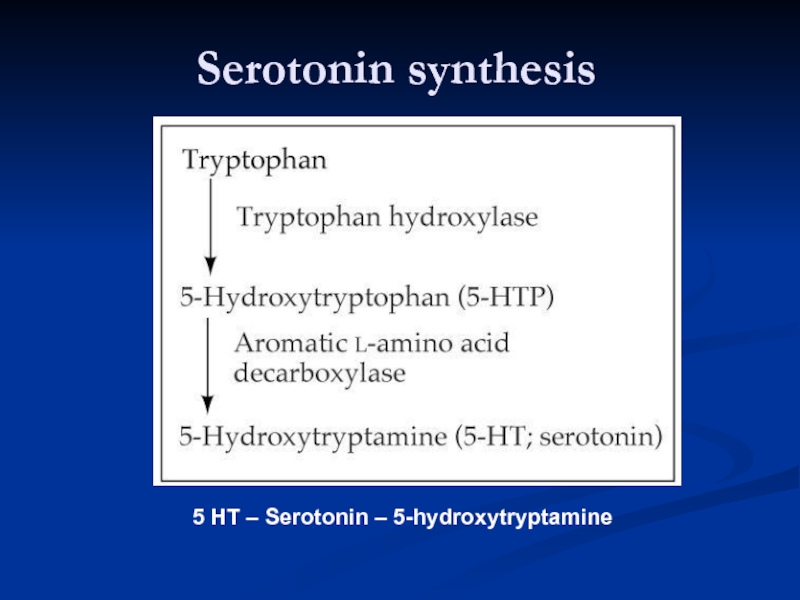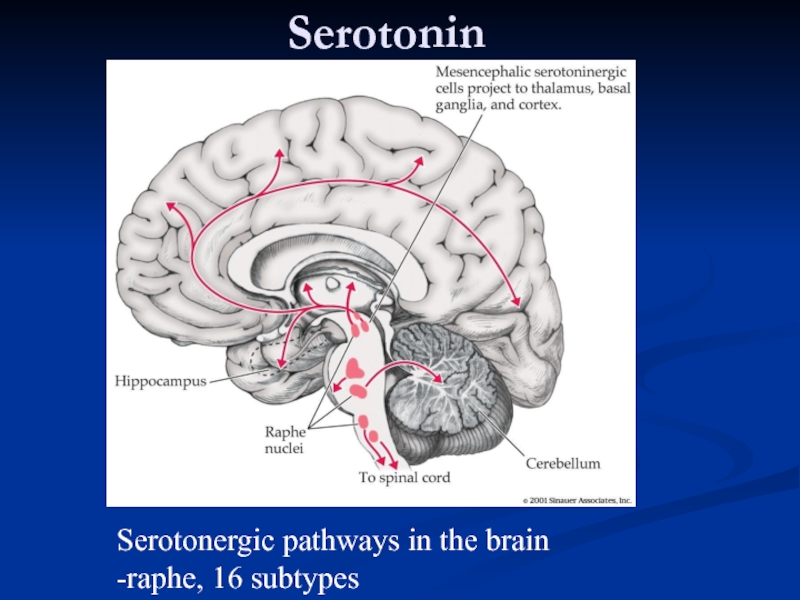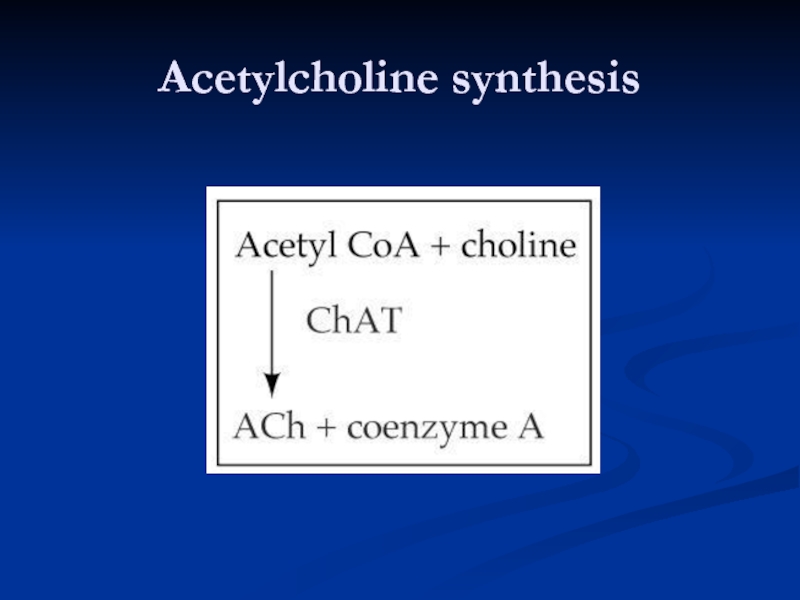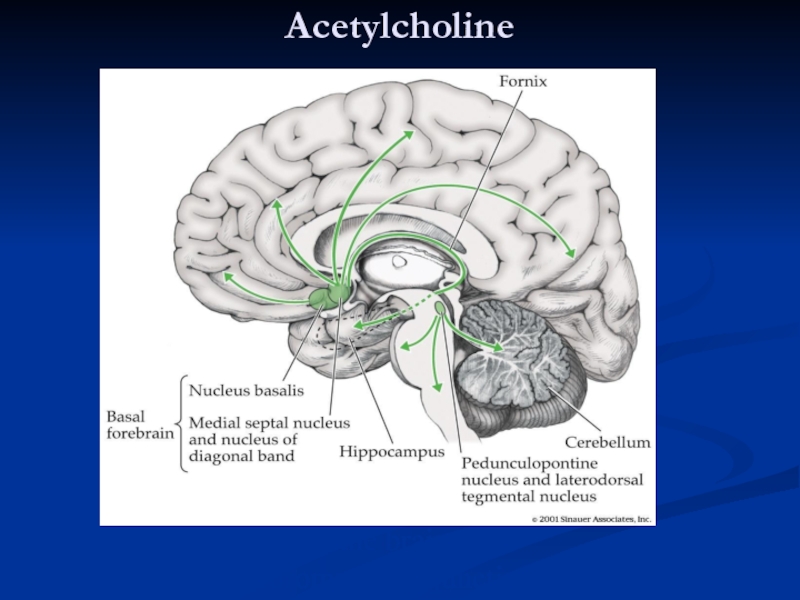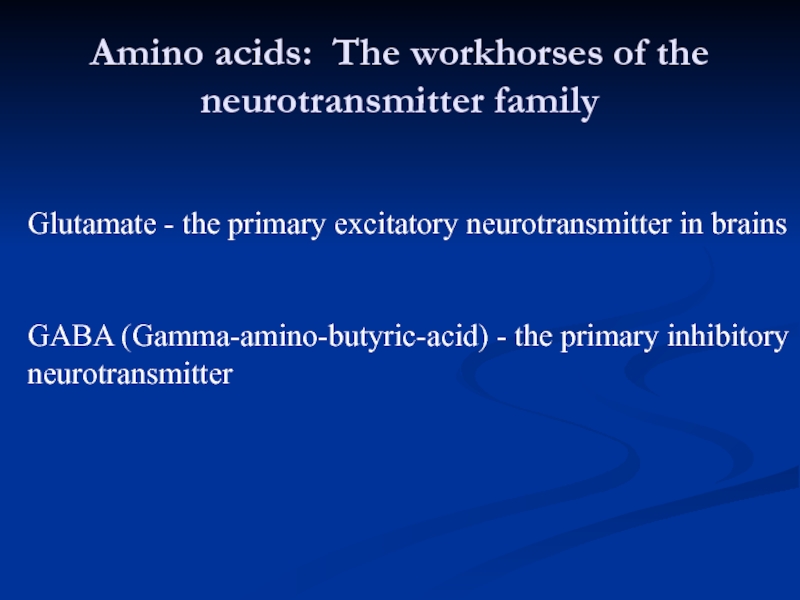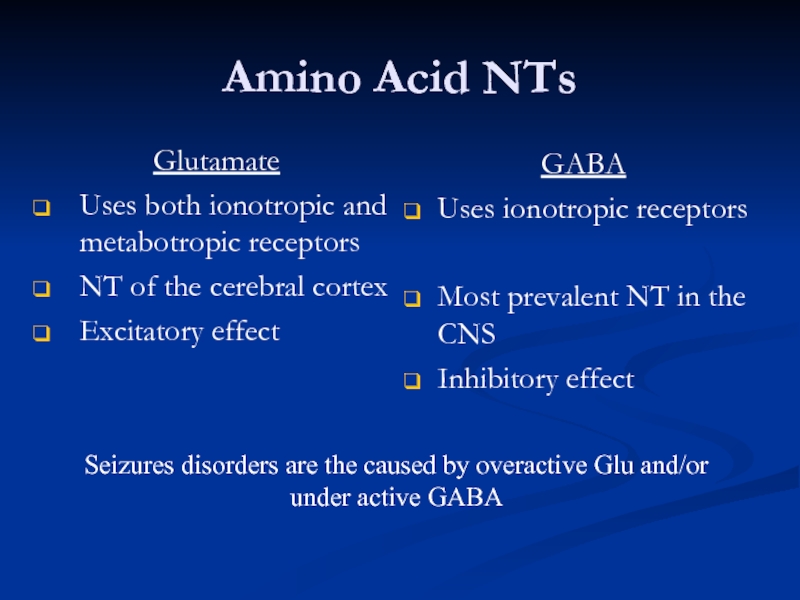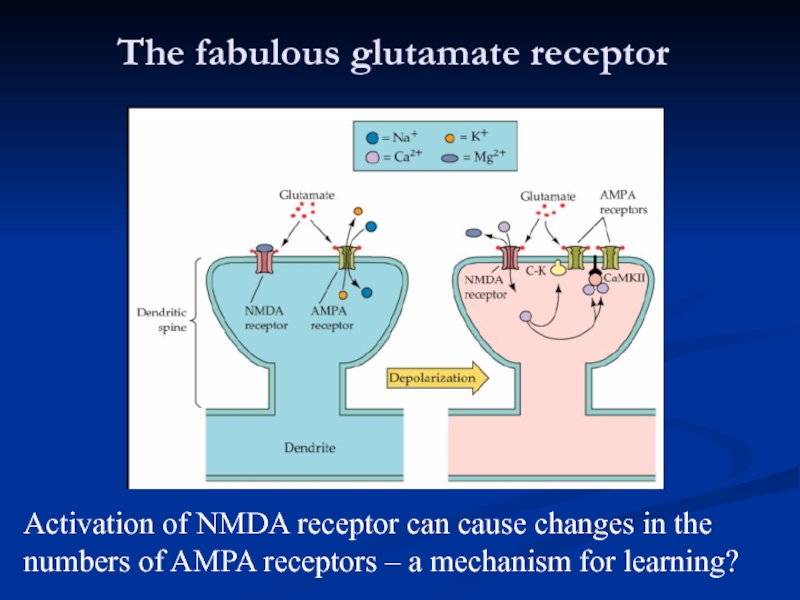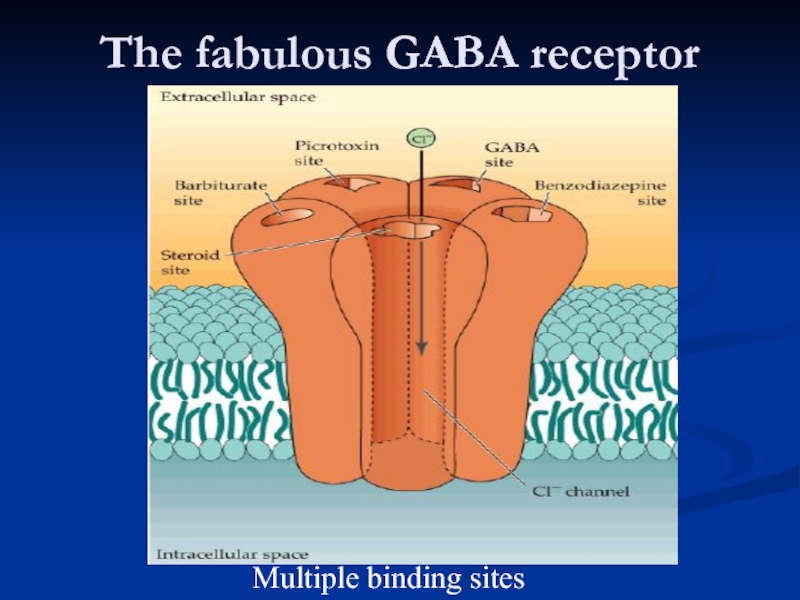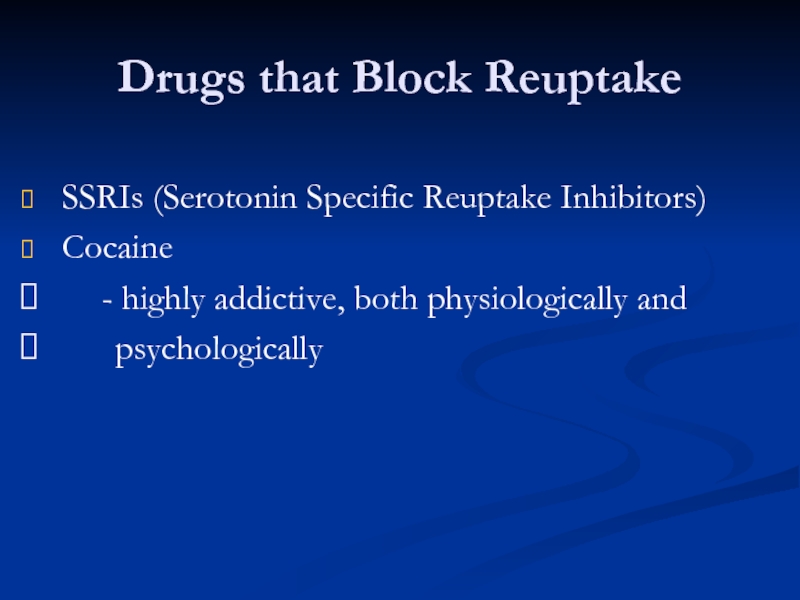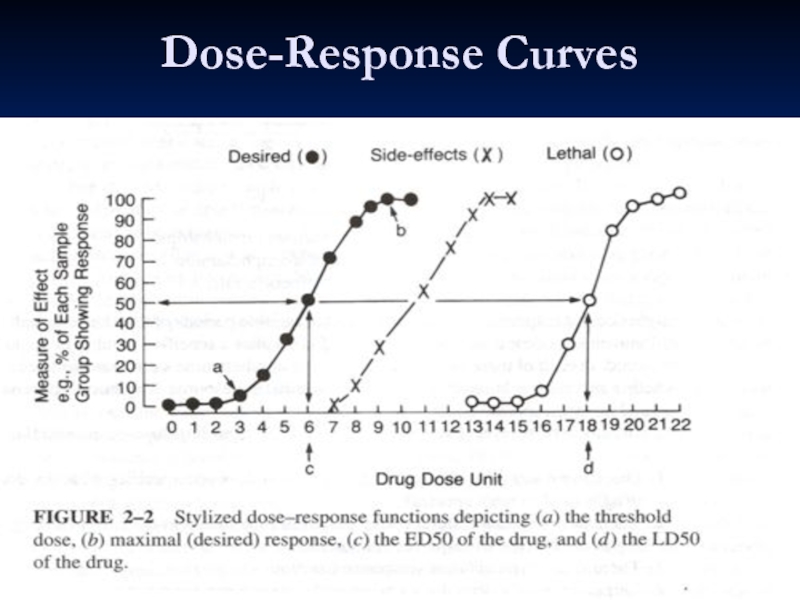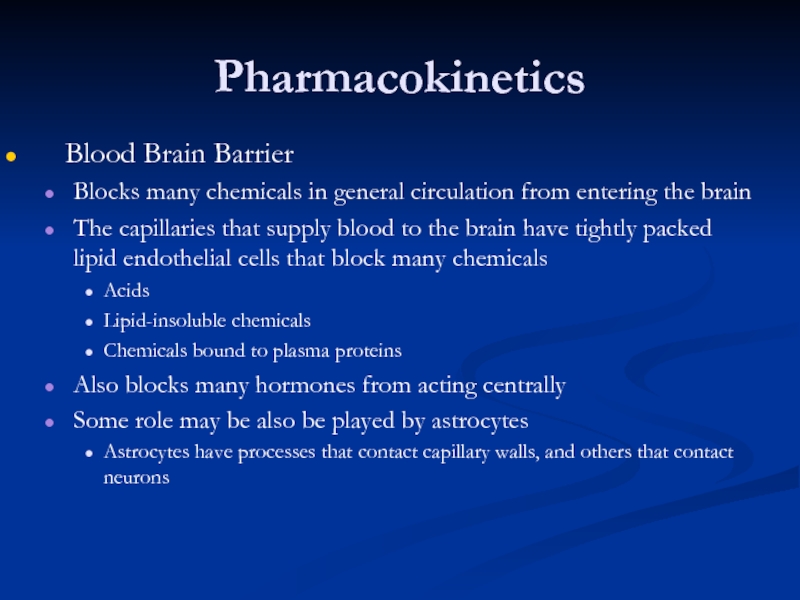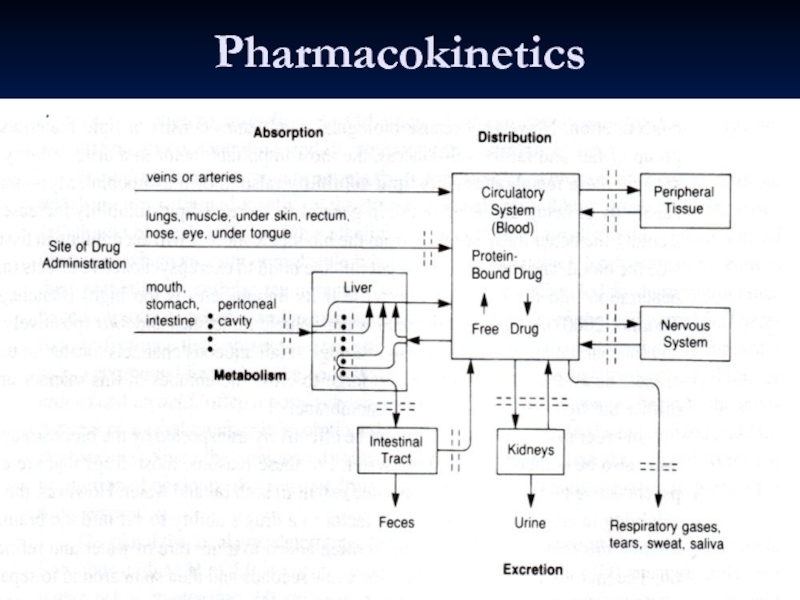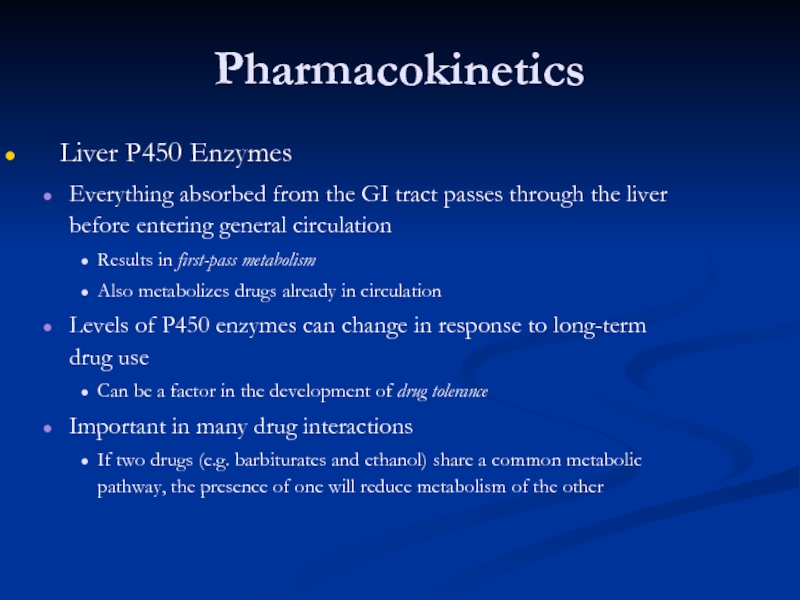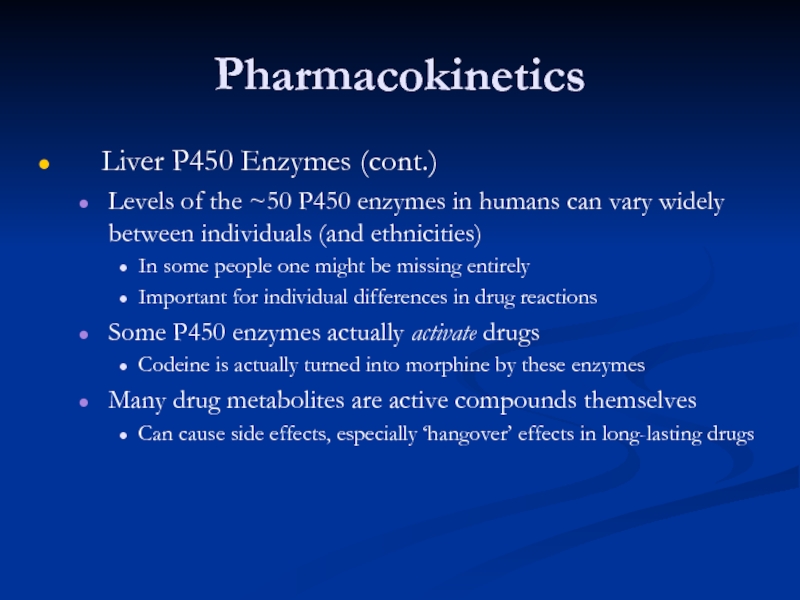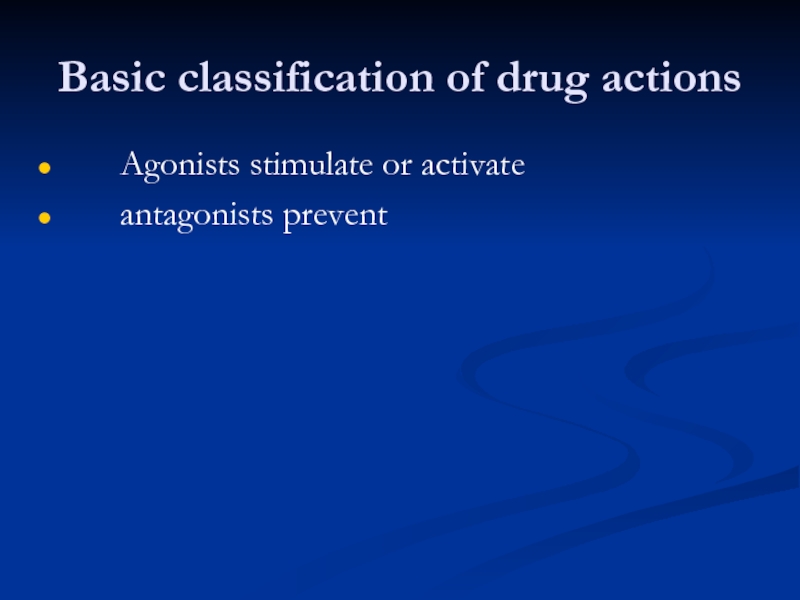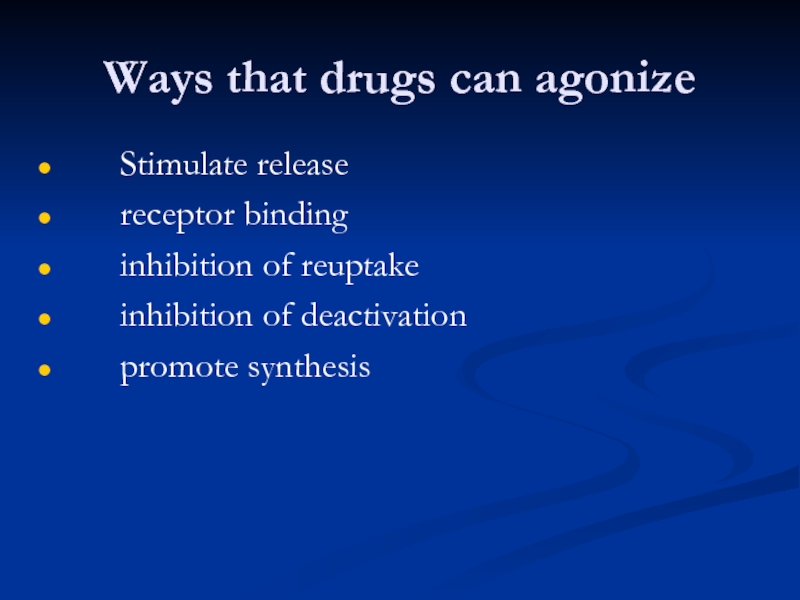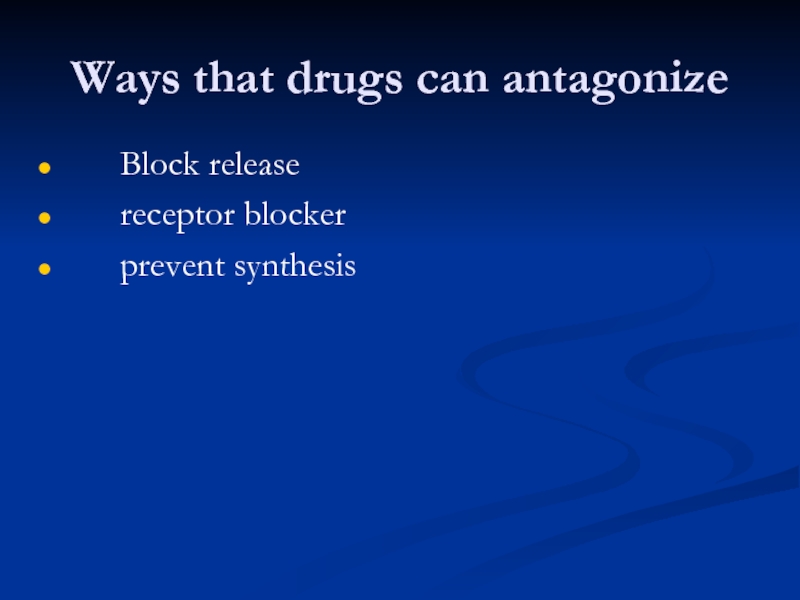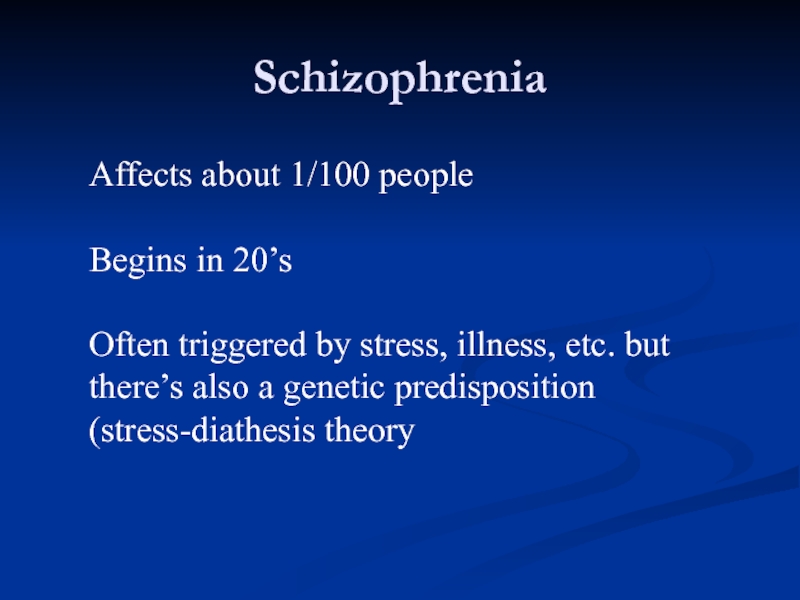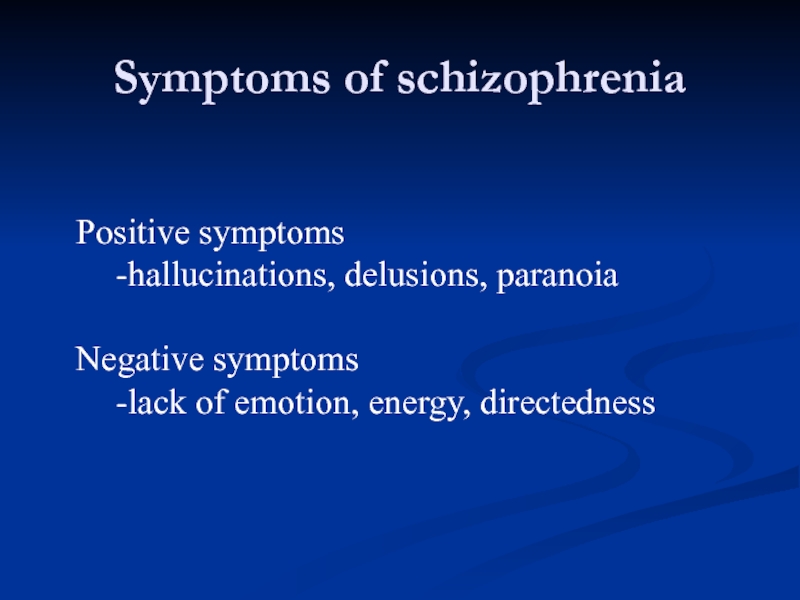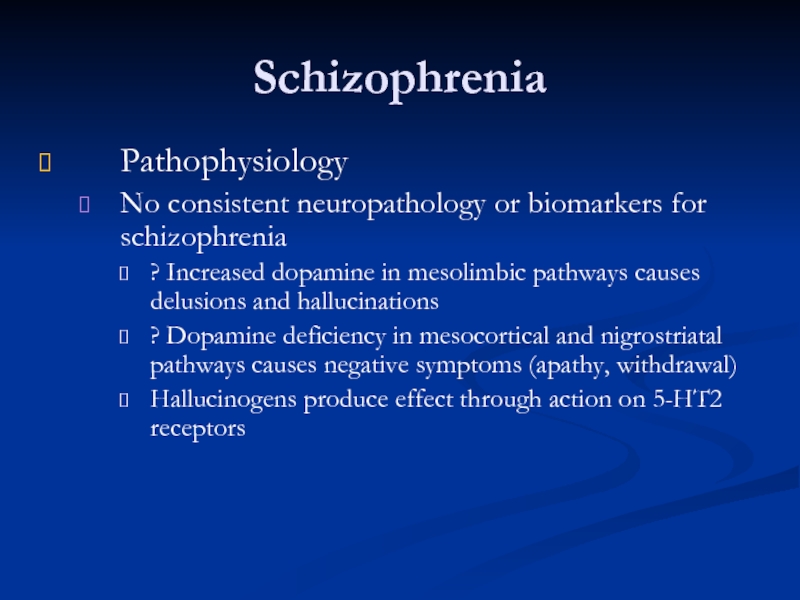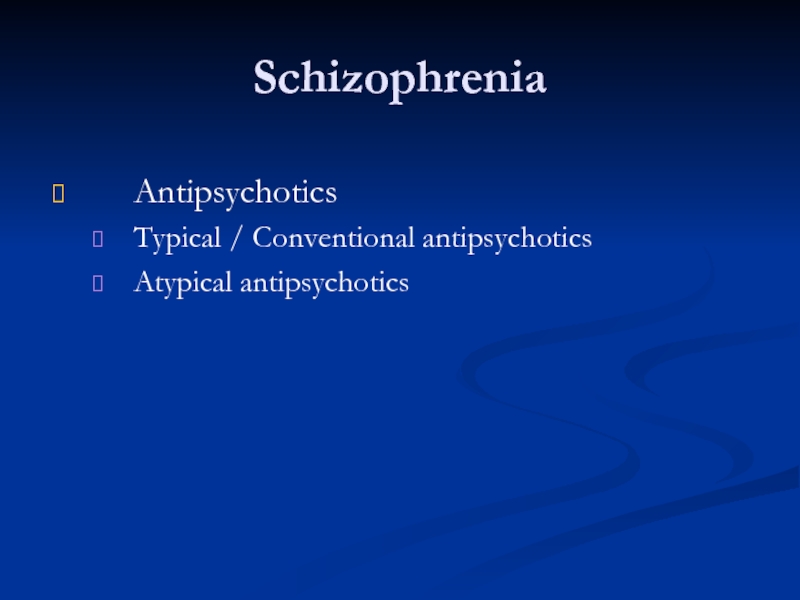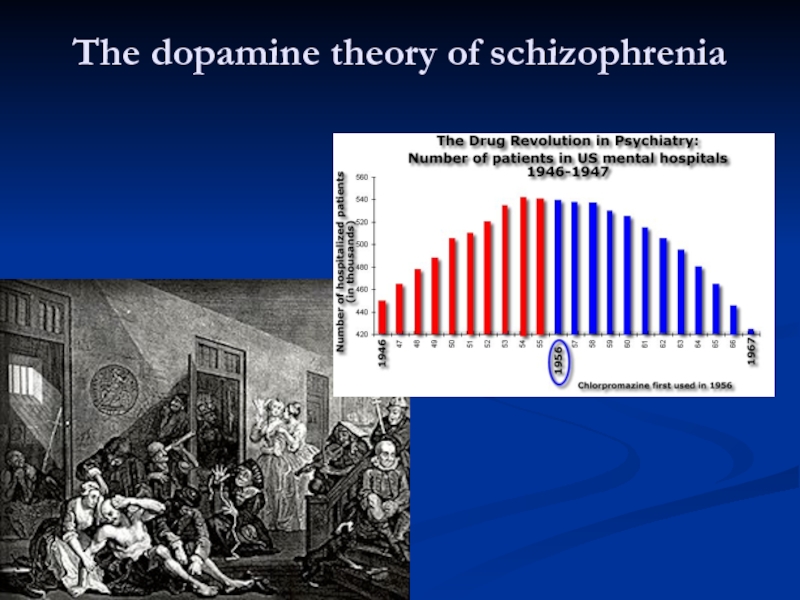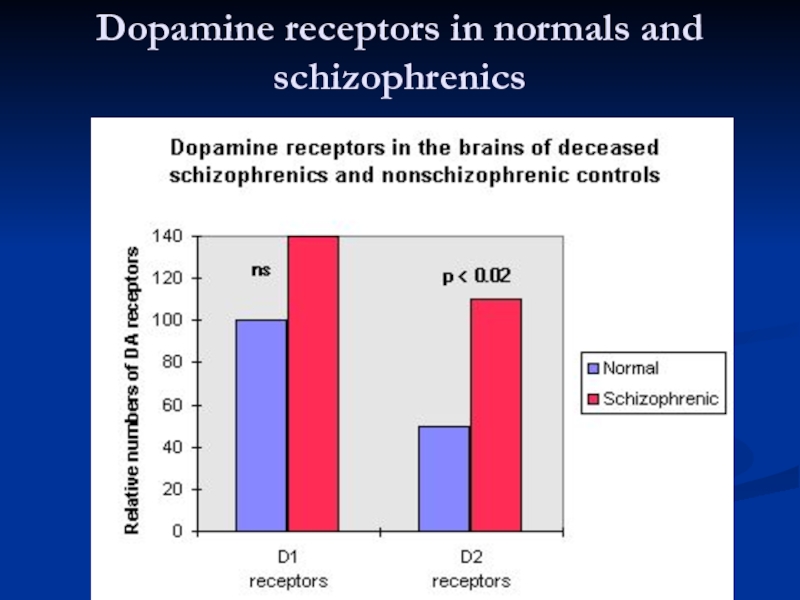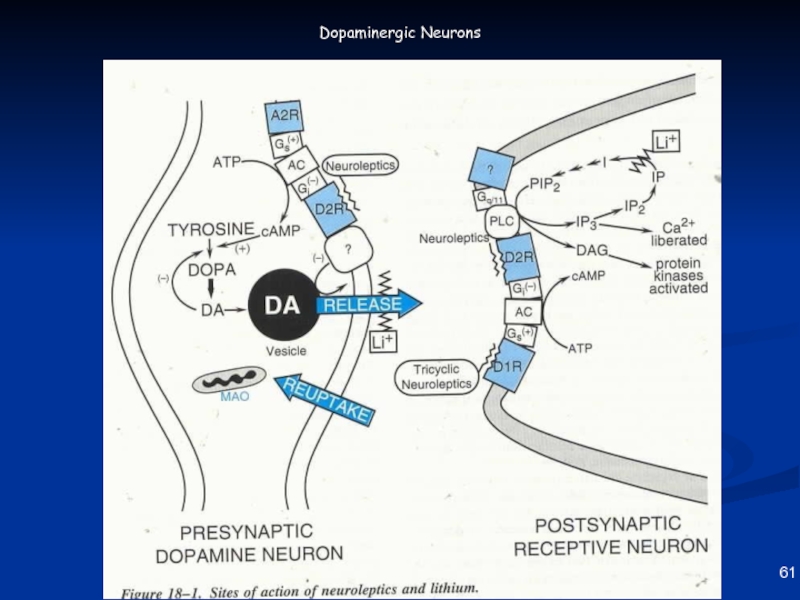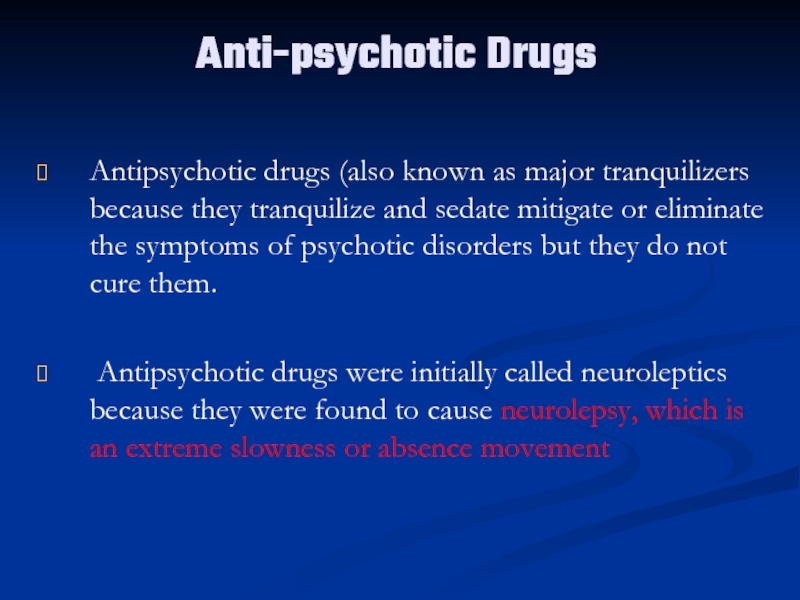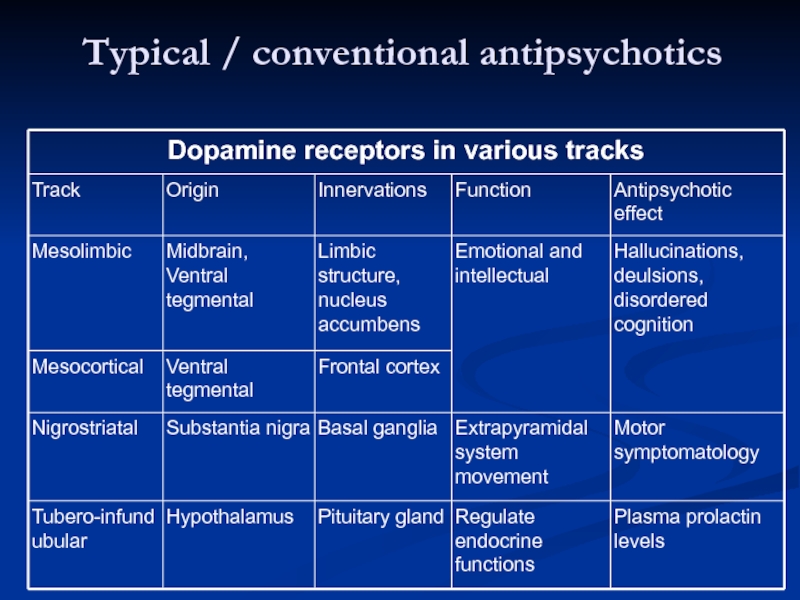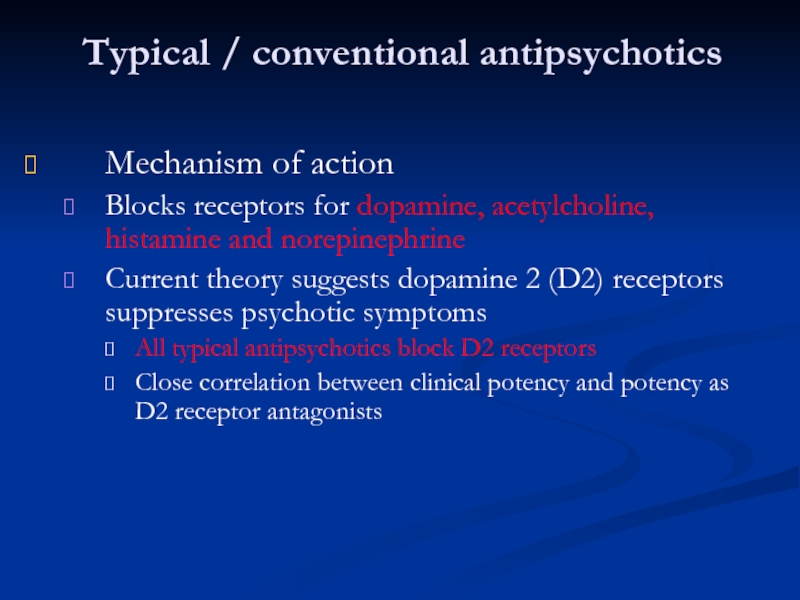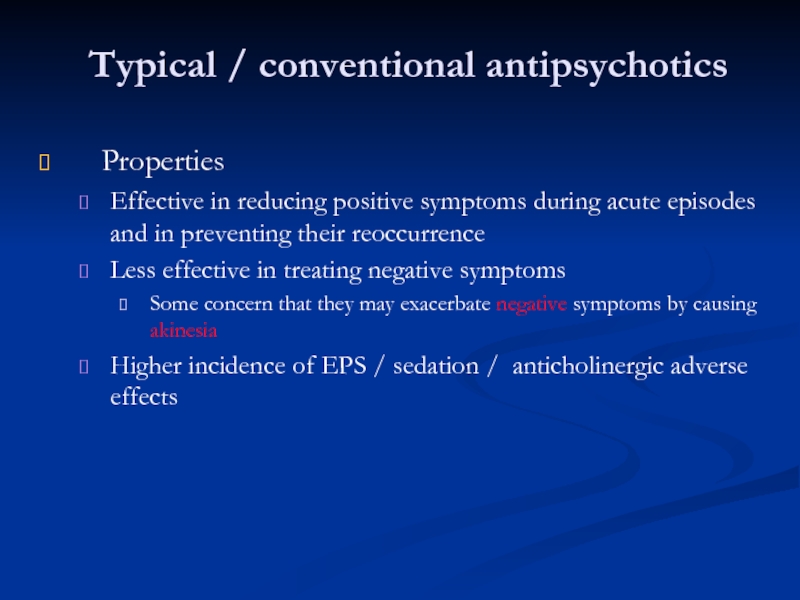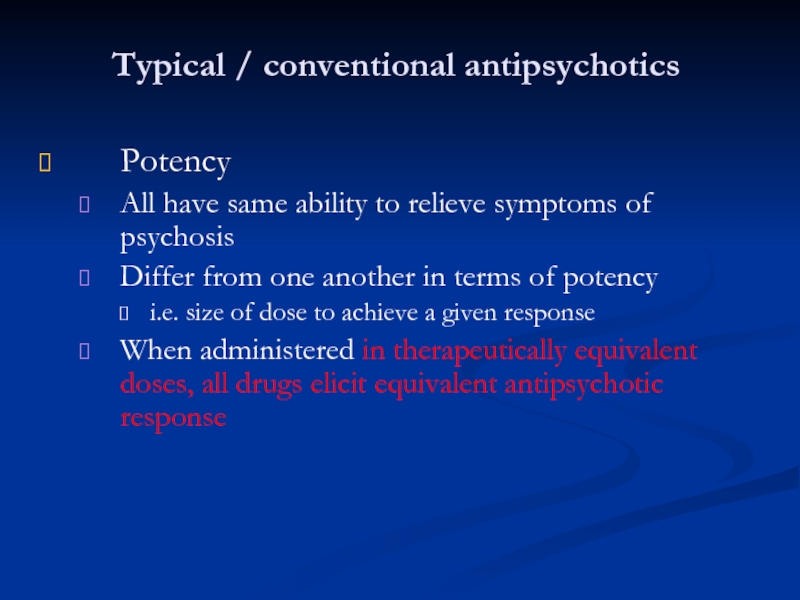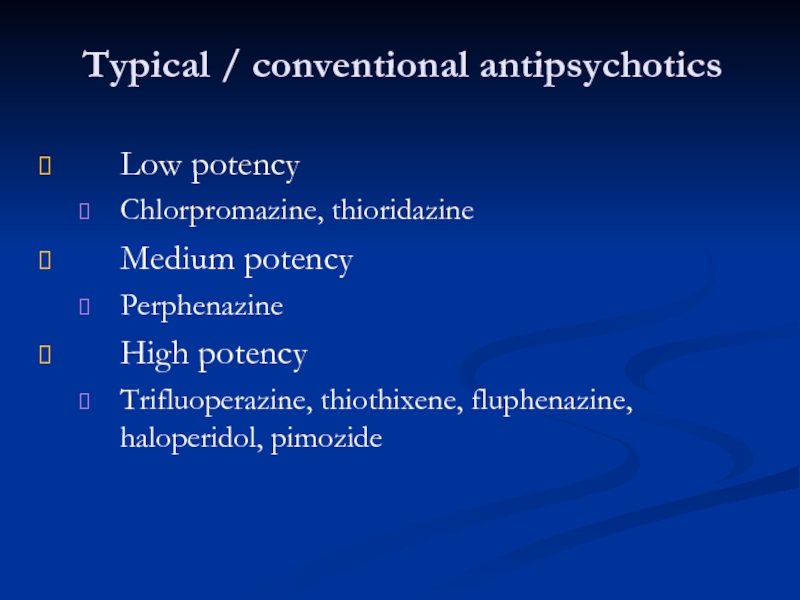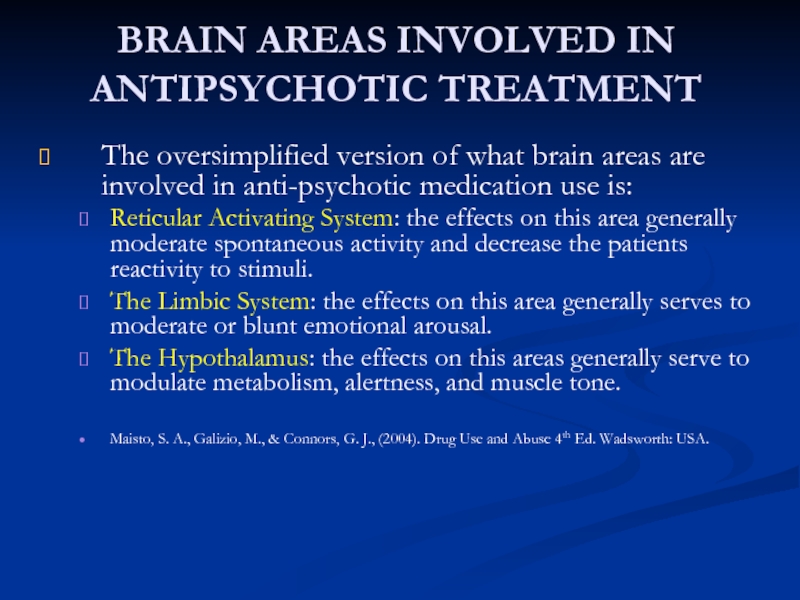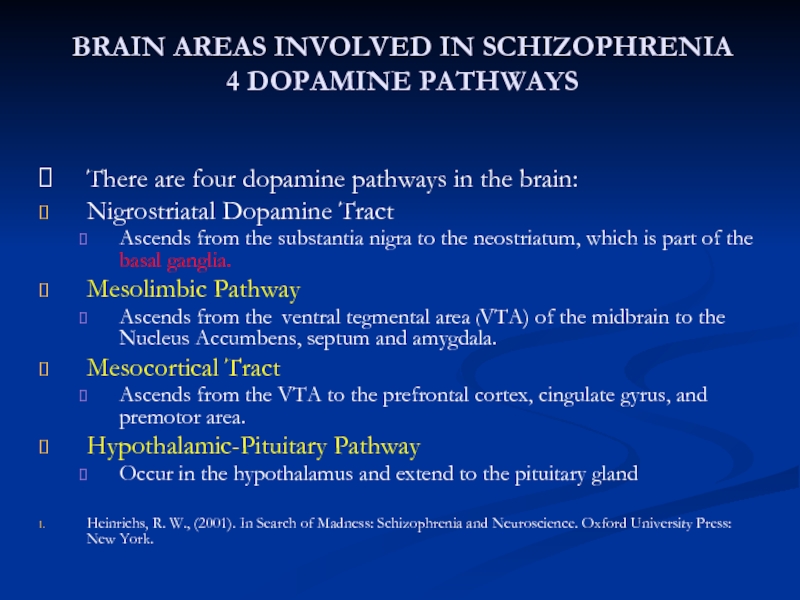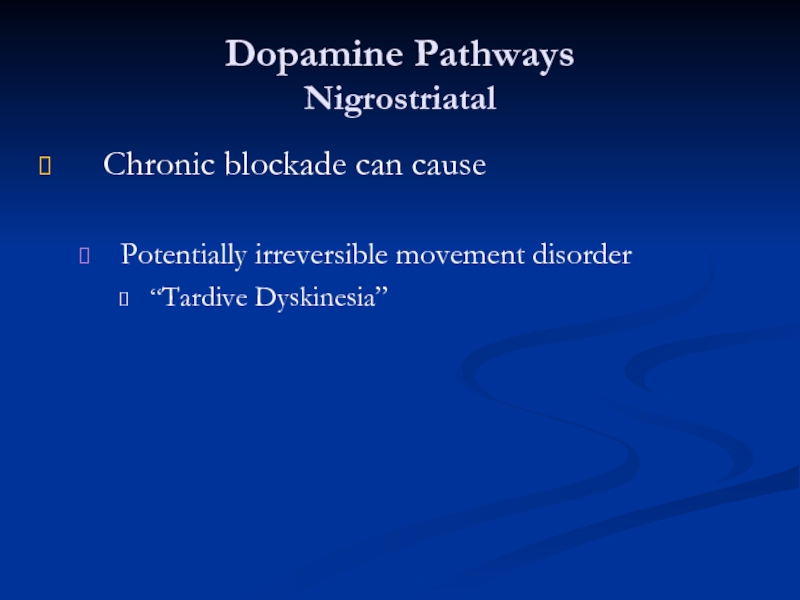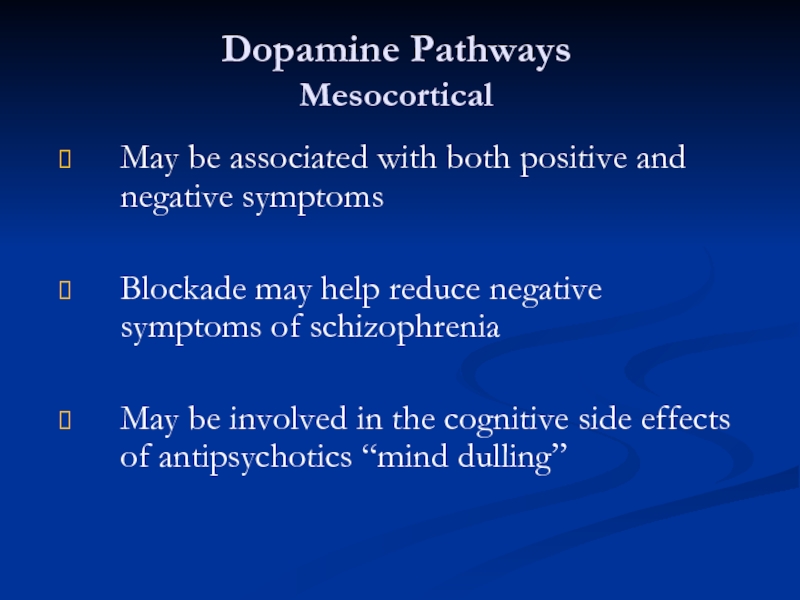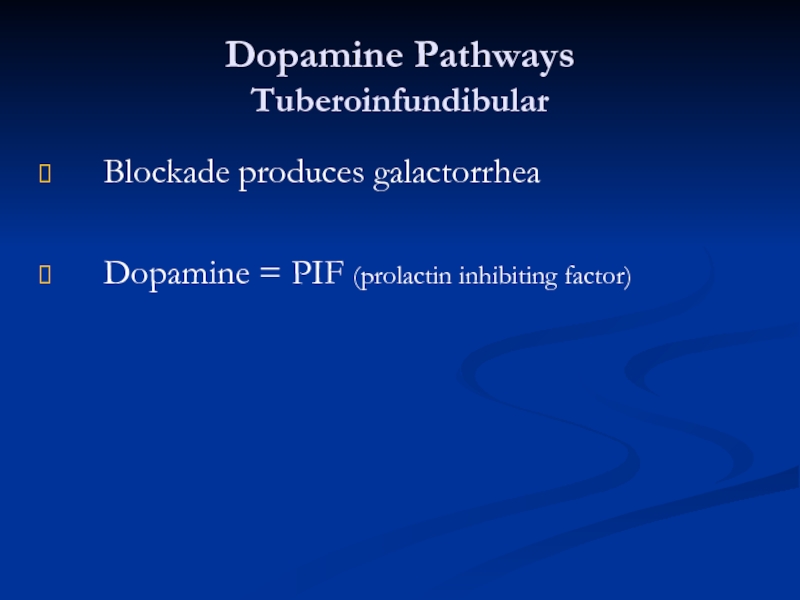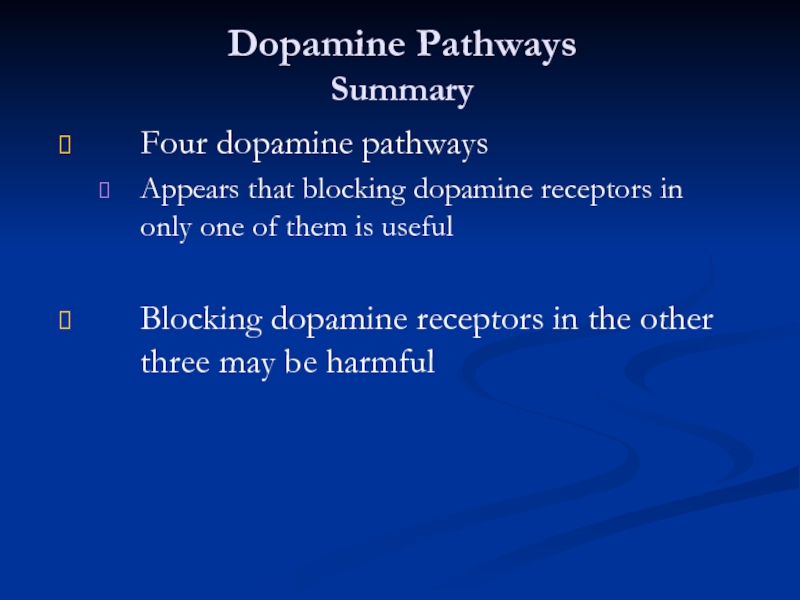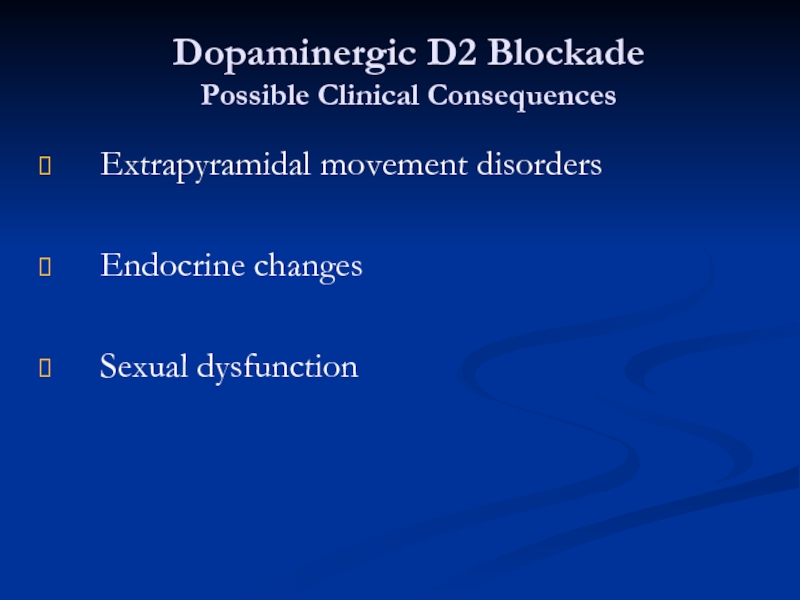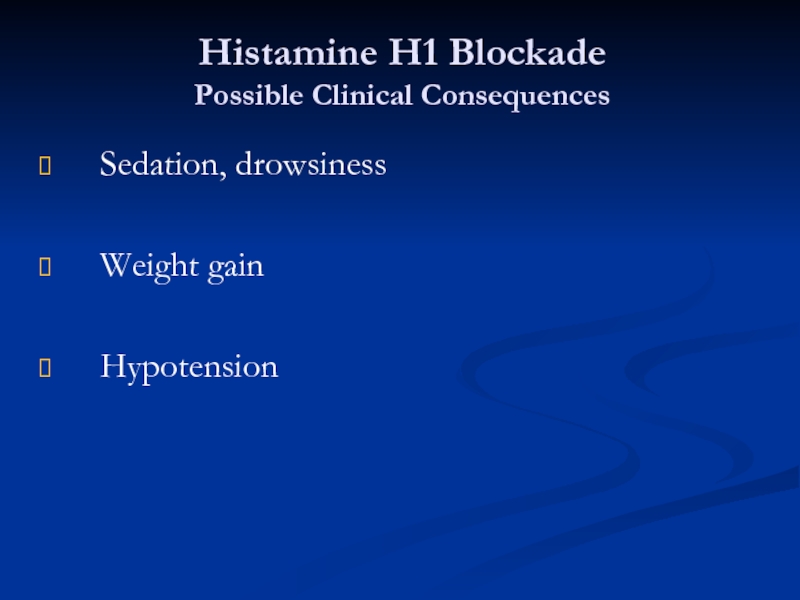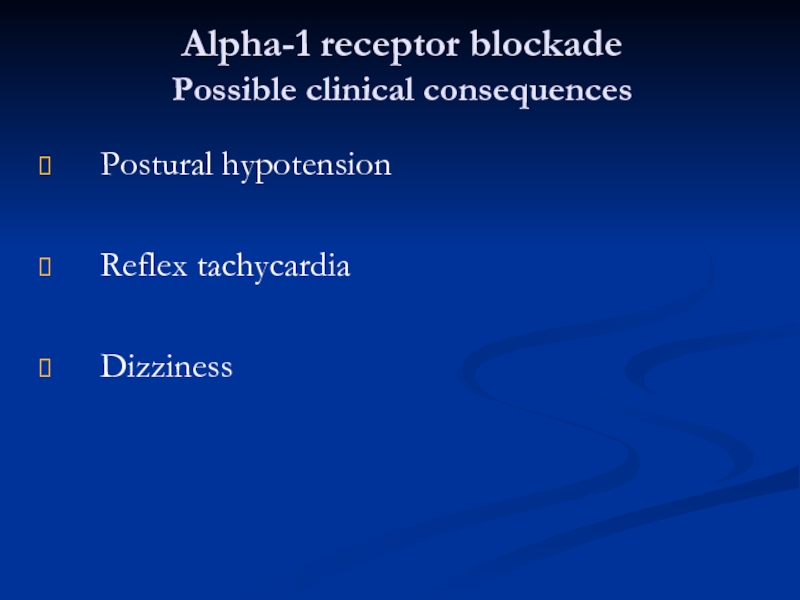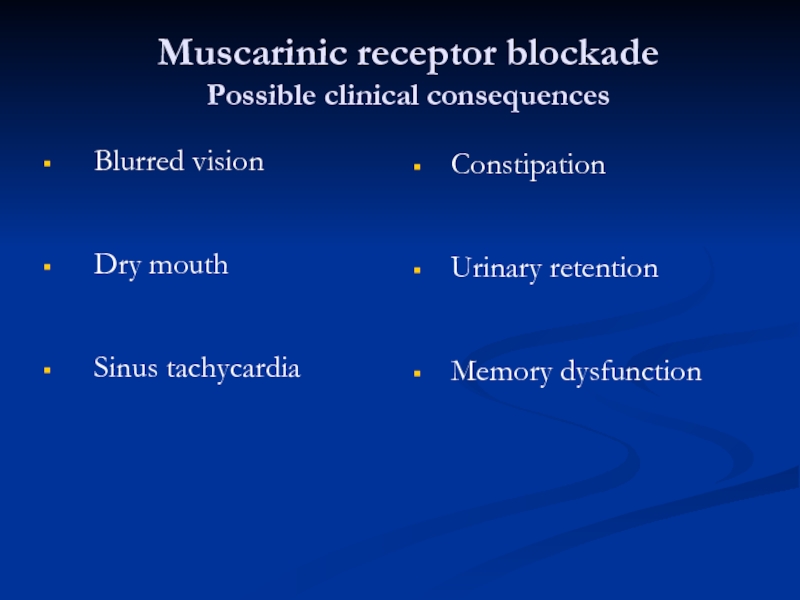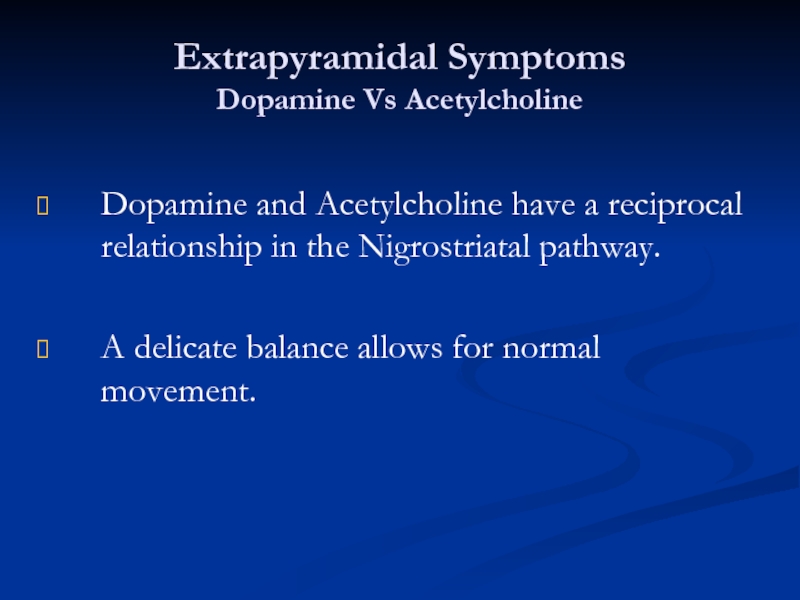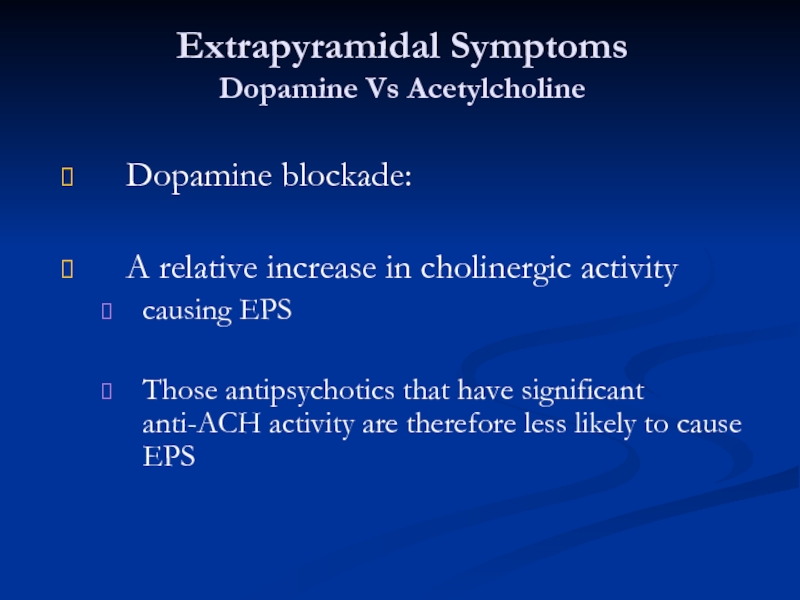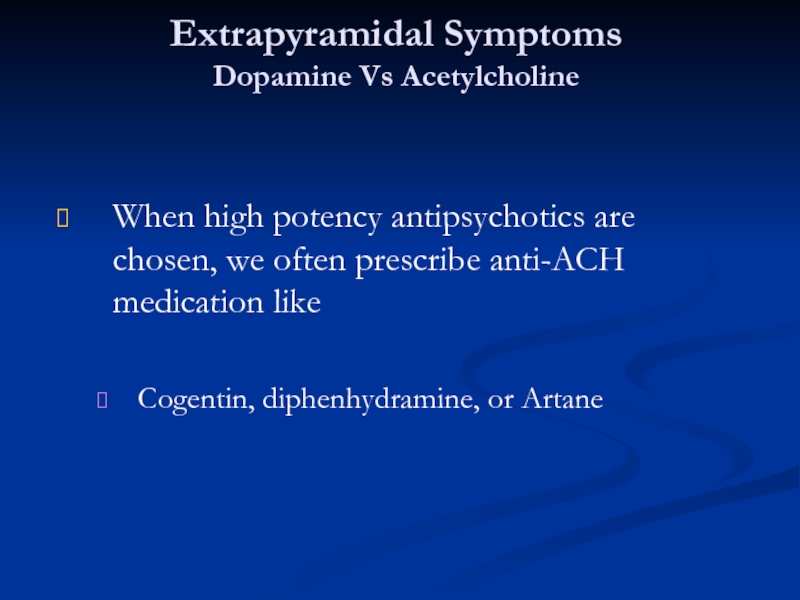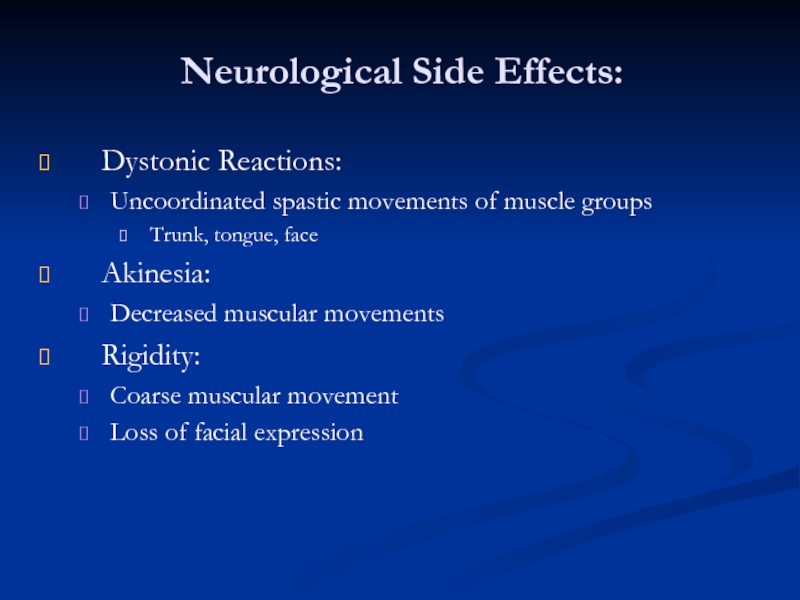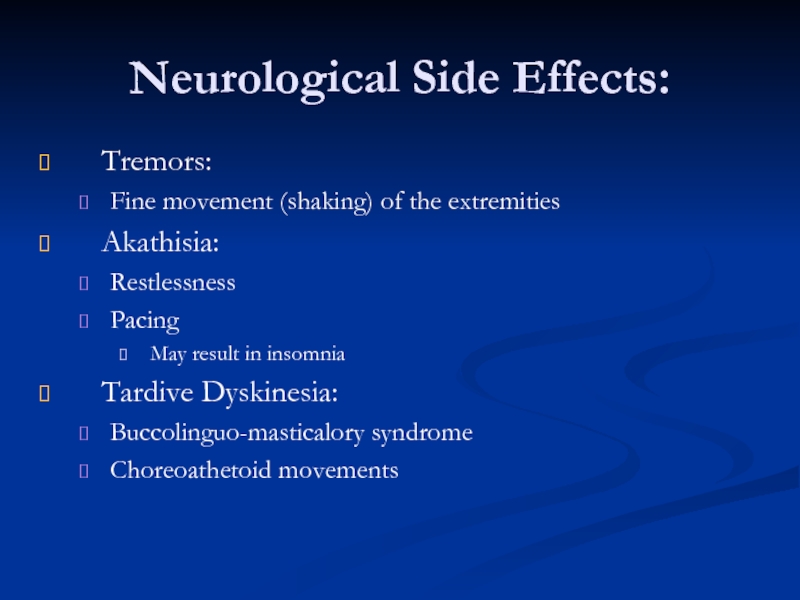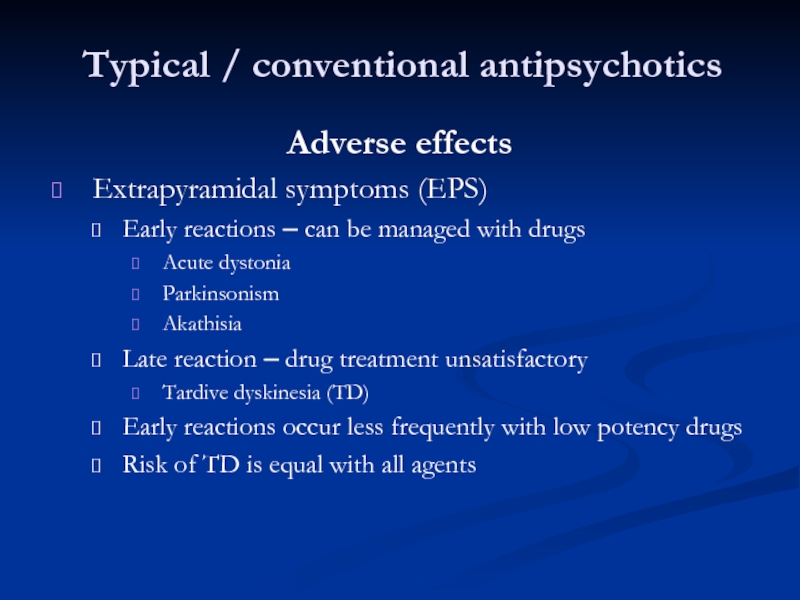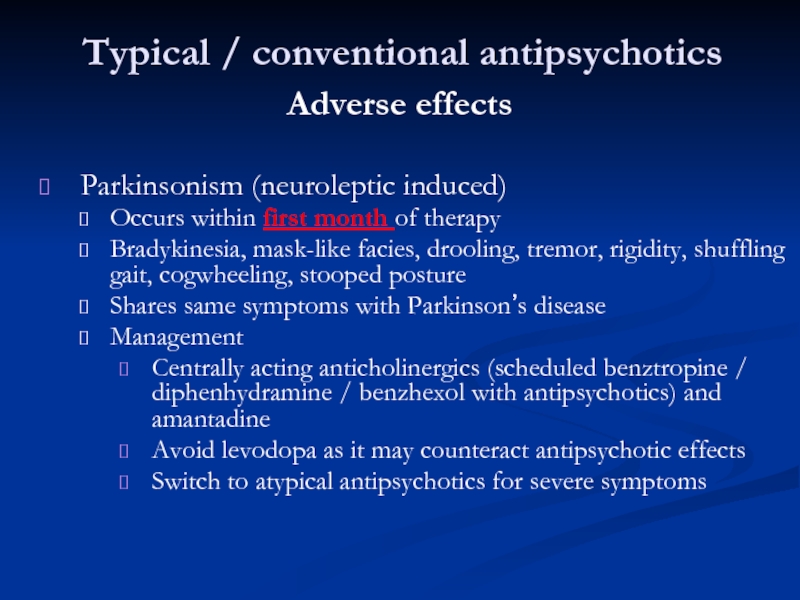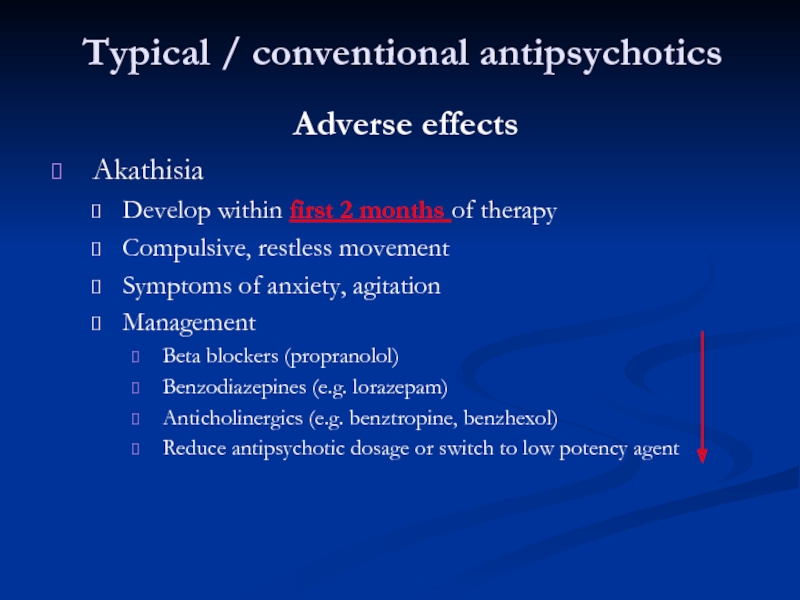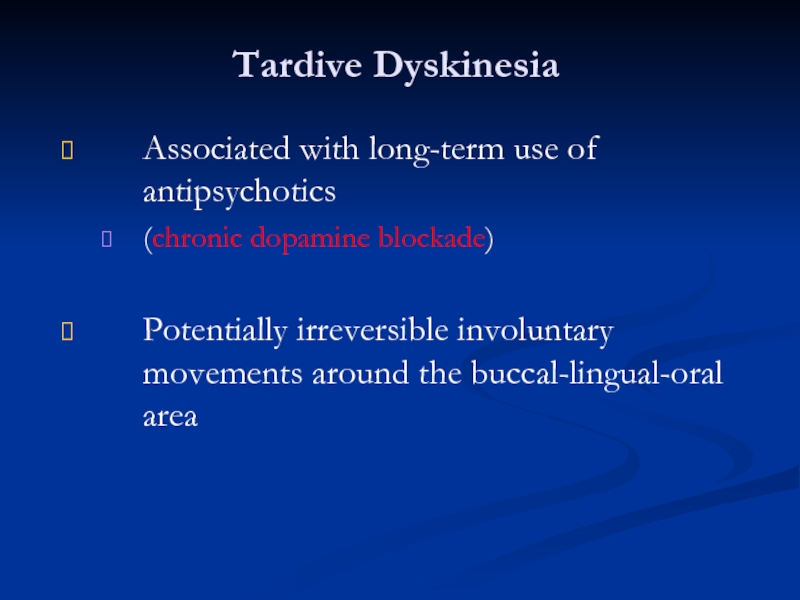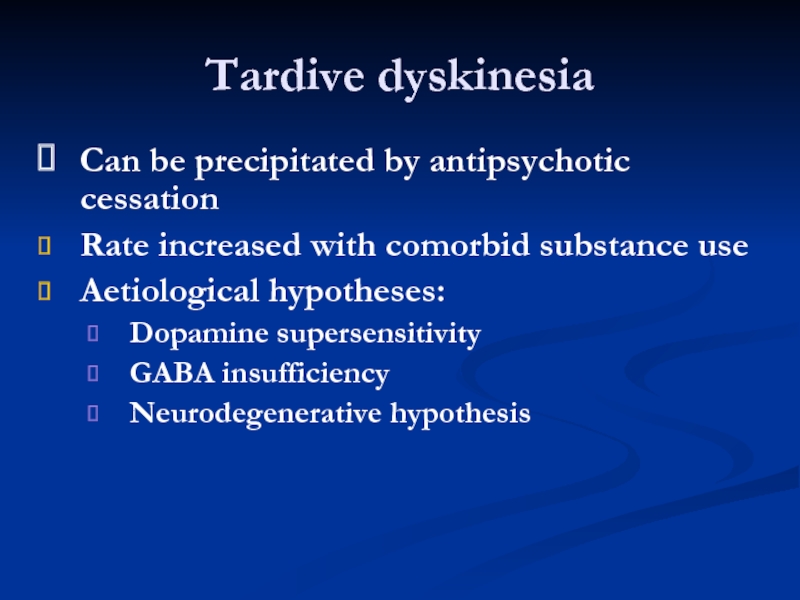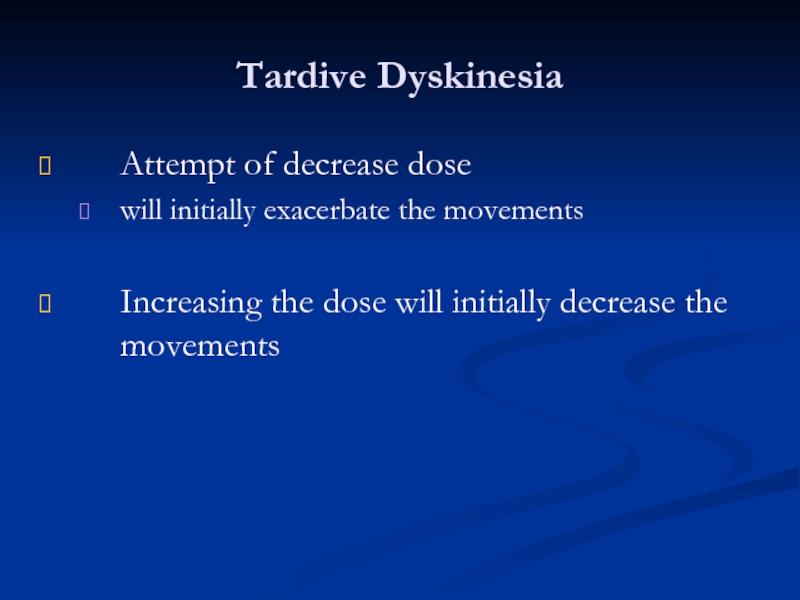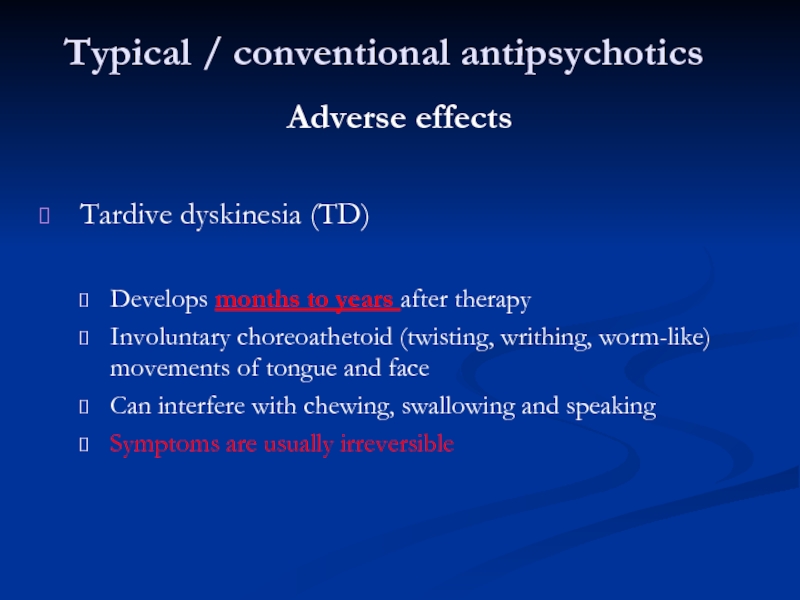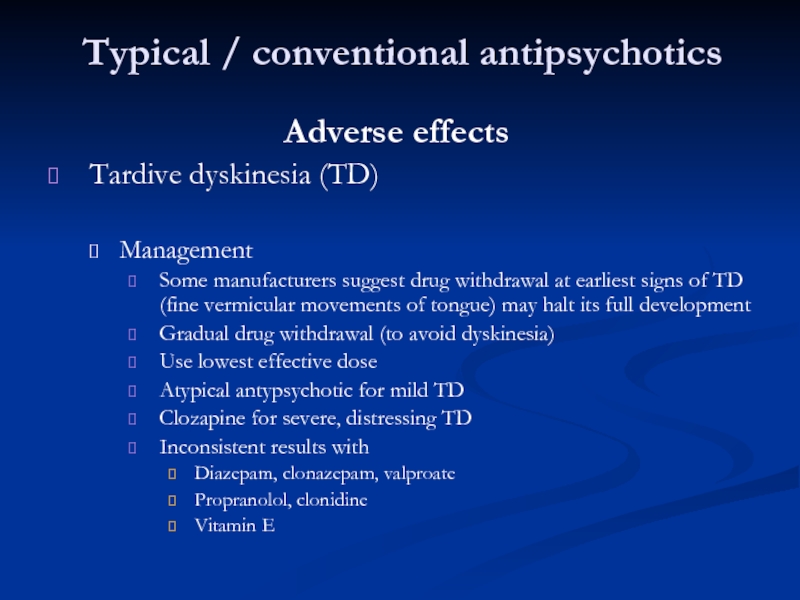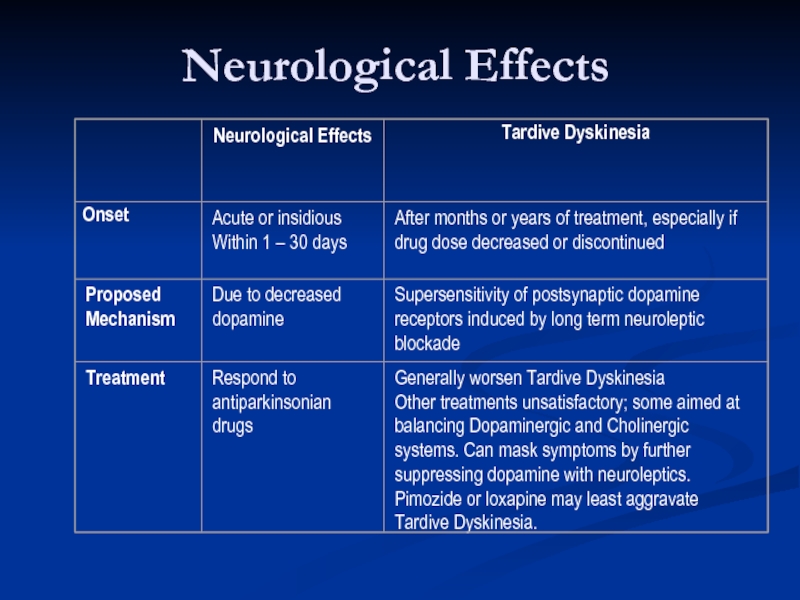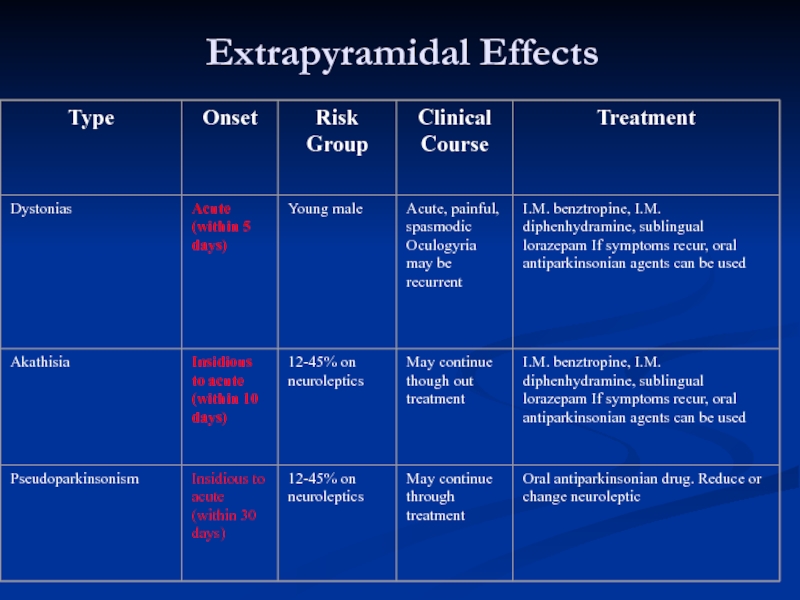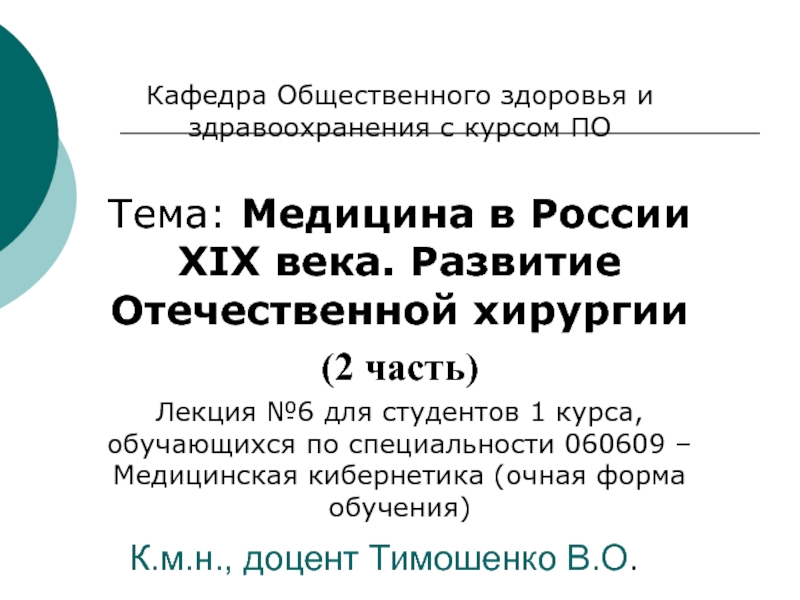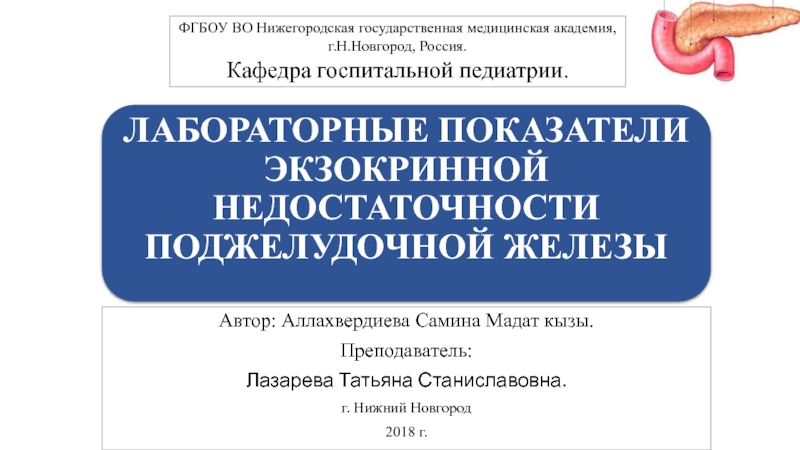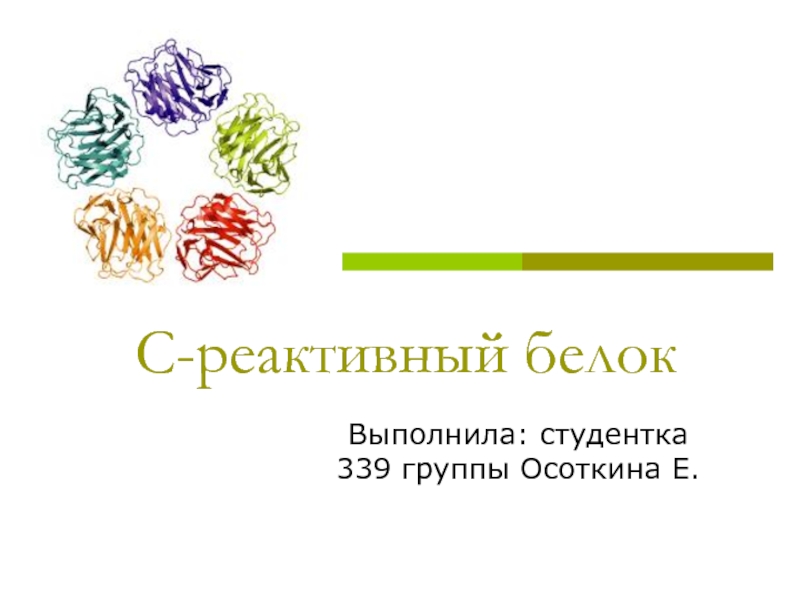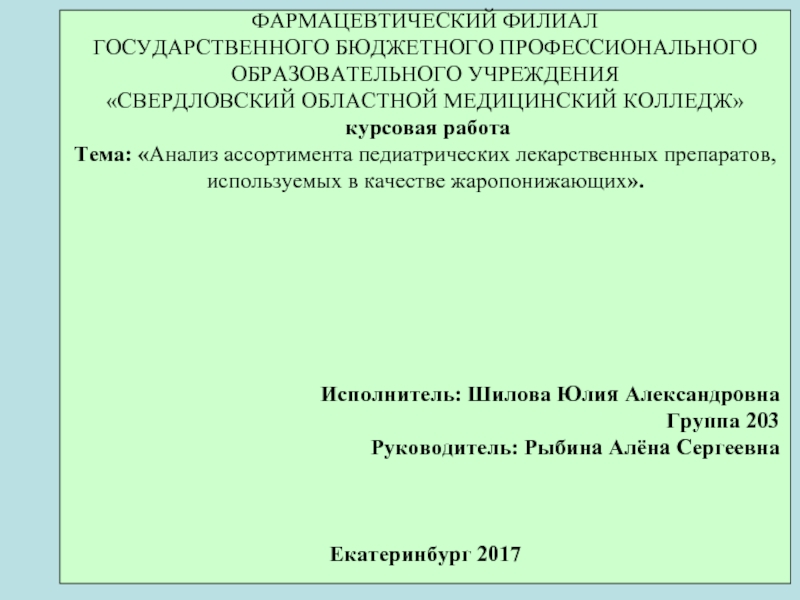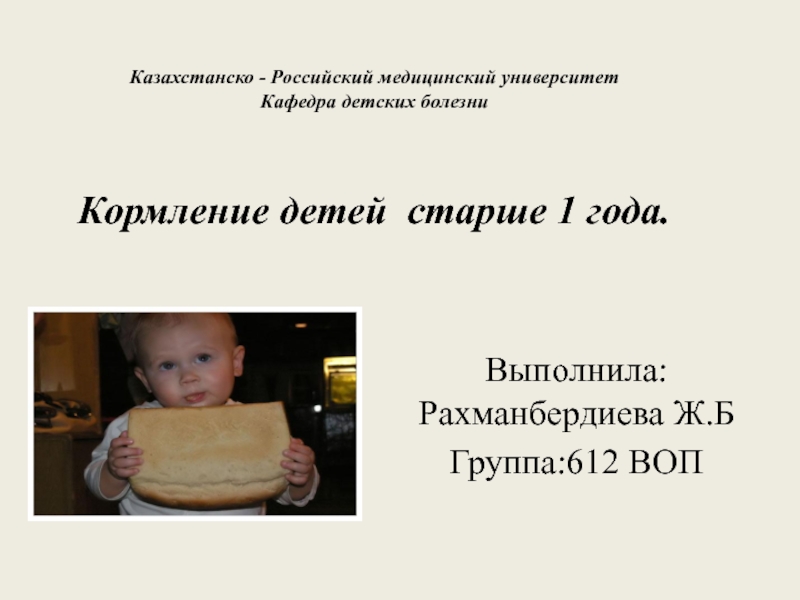- Главная
- Разное
- Дизайн
- Бизнес и предпринимательство
- Аналитика
- Образование
- Развлечения
- Красота и здоровье
- Финансы
- Государство
- Путешествия
- Спорт
- Недвижимость
- Армия
- Графика
- Культурология
- Еда и кулинария
- Лингвистика
- Английский язык
- Астрономия
- Алгебра
- Биология
- География
- Детские презентации
- Информатика
- История
- Литература
- Маркетинг
- Математика
- Медицина
- Менеджмент
- Музыка
- МХК
- Немецкий язык
- ОБЖ
- Обществознание
- Окружающий мир
- Педагогика
- Русский язык
- Технология
- Физика
- Философия
- Химия
- Шаблоны, картинки для презентаций
- Экология
- Экономика
- Юриспруденция
Biological Therapy in Psychiatry презентация
Содержание
- 2. Biological Therapy in Psychiatry Anatoly Kreinin
- 3. Mental Health Care Pre-1930’s
- 4. Before we begin… “It should be made
- 5. What is a ‘drug’? A very vague
- 6. HISTORY OF ANTIPSYCHOTICS Anti-psychotics were discovered accidentally
- 7. Treatment Before Drugs Came into Play King
- 9. Efficacy and Potency Efficacy - Ability of
- 10. Drug Toxicity Toxicity: Point at which concentrations
- 11. Absorption From site of administration into the
- 12. Pharmacokinetics: How the Body Acts on the Drug Absorption Distribution Metabolism Elimination
- 13. Bioavailability Amount of drug that reaches
- 14. Distribution Amount of drug found in various
- 15. Crossing the Blood Brain Barrier Passive diffusion
- 16. Metabolism Process by which the drug is
- 17. Elimination Clearance: Total amount of blood, serum,
- 18. Dosing and Steady State Dosing: Administration of
- 19. Pharmacokinetics: Cultural Considerations 9% of whites -
- 20. Phases of Drug Treatment Initiation Stabilization Maintenance Discontinuation
- 21. Tolerance & Dependence Tolerance – state of
- 22. Receptors Types of Action Agonist: same biologic
- 23. Ion Channels Drugs can block or open
- 24. Enzymes Enzymes catalyze specific biochemical reactions within
- 25. Carrier Proteins Transport neurotransmitters across cell membranes
- 26. Being a neurotransmitter: What does it take?
- 27. Neurotransmitters 80 plus chemical substances that provide
- 28. All psychoactive drugs act centrally (i.e. on
- 29. Neurotransmitters have 7 actions Synthesized
- 30. A quick review of synaptic action receptor types (ionotropic and metabotropic) receptor subtypes
- 31. Metabotropic receptor Includes the metabotropic glutamate
- 32. Since opening channels by metabotropic receptors involves
- 33. The classical neurotransmitters Amines Monoamines catecholamines (dopamine,
- 34. Catecholamine synthesis -this is not for torture
- 35. Catecholamines Subtantia nigra and Parkinson’s disease Mesocorticolimbic system and schizophrenia Receptor specificity Dopamine
- 36. Catecholamines Noradrenergic pathways in the brain -locus coeruleus
- 37. Serotonin synthesis 5 HT – Serotonin – 5-hydroxytryptamine
- 38. Serotonin Serotonergic pathways in the brain -raphe, 16 subtypes
- 39. Acetylcholine synthesis
- 40. Acetylcholine Cholinergic pathways in the brain -basal forebrain, neuromuscular junction
- 41. Amino acids: The workhorses of the neurotransmitter
- 42. Amino Acid NTs Glutamate Uses both ionotropic
- 43. The fabulous glutamate receptor Activation of NMDA
- 44. The fabulous GABA receptor Multiple binding sites
- 45. Drugs that Block Reuptake SSRIs (Serotonin Specific
- 46. Dose-Response Curves
- 47. Pharmacokinetics Blood Brain Barrier Blocks many chemicals
- 48. Pharmacokinetics
- 49. Pharmacokinetics Liver P450 Enzymes Everything absorbed from
- 50. Pharmacokinetics Liver P450 Enzymes (cont.) Levels of
- 51. Basic classification of drug actions Agonists stimulate or activate antagonists prevent
- 52. Ways that drugs can agonize Stimulate release
- 53. Ways that drugs can antagonize Block release receptor blocker prevent synthesis
- 54. Schizophrenia Affects about 1/100 people Begins
- 55. Symptoms of schizophrenia Positive symptoms -hallucinations, delusions,
- 56. Schizophrenia Pathophysiology No consistent neuropathology or biomarkers
- 57. Schizophrenia Antipsychotics Typical / Conventional antipsychotics Atypical antipsychotics
- 58. The dopamine theory of schizophrenia
- 59. Dopamine receptors in normals and schizophrenics
- 60. 61 Dopaminergic Neurons
- 61. Anti-psychotic Drugs Antipsychotic drugs (also known as
- 62. Typical / conventional antipsychotics
- 63. Typical / conventional antipsychotics Mechanism of action
- 64. Typical / conventional antipsychotics Properties Effective in
- 65. Typical / conventional antipsychotics Potency All have
- 66. Typical / conventional antipsychotics Low potency Chlorpromazine,
- 67. BRAIN AREAS INVOLVED IN ANTIPSYCHOTIC TREATMENT The
- 68. BRAIN AREAS INVOLVED IN SCHIZOPHRENIA 4
- 69. Dopamine Pathways Nigrostriatal Chronic blockade can cause
- 70. Dopamine Pathways Mesocortical May be associated with
- 71. Dopamine Pathways Tuberoinfundibular Blockade produces galactorrhea Dopamine = PIF (prolactin inhibiting factor)
- 72. Dopamine Pathways Summary Four dopamine pathways Appears
- 73. Dopaminergic D2 Blockade Possible Clinical Consequences Extrapyramidal movement disorders Endocrine changes Sexual dysfunction
- 74. Histamine H1 Blockade Possible Clinical Consequences Sedation, drowsiness Weight gain Hypotension
- 75. Alpha-1 receptor blockade Possible clinical consequences Postural hypotension Reflex tachycardia Dizziness
- 76. Muscarinic receptor blockade Possible clinical consequences Blurred
- 77. Extrapyramidal Symptoms Dopamine Vs Acetylcholine Dopamine and
- 78. Extrapyramidal Symptoms Dopamine Vs Acetylcholine Dopamine blockade:
- 79. Extrapyramidal Symptoms Dopamine Vs Acetylcholine When high
- 80. Neurological Side Effects: Dystonic Reactions: Uncoordinated spastic
- 81. Neurological Side Effects: Tremors: Fine movement (shaking)
- 82. Typical / conventional antipsychotics Adverse effects Extrapyramidal
- 83. Typical / conventional antipsychotics Adverse effects
- 84. Typical / conventional antipsychotics Adverse effects Akathisia
- 85. Tardive Dyskinesia Associated with long-term use of
- 86. Tardive dyskinesia Can be precipitated by antipsychotic
- 87. Tardive Dyskinesia Attempt of decrease dose will
- 88. Typical / conventional antipsychotics Adverse effects
- 89. Typical / conventional antipsychotics Adverse effects Tardive
- 90. Neurological Effects
- 91. Extrapyramidal Effects
Слайд 2Biological Therapy
in Psychiatry
Anatoly Kreinin MD, PhD
Director of Psychiatric Department, Tirat
Carmel Mental Health Center, Affiliated to Bruce Rappaport Medical Faculty, Technion, Haifa, Israel
Слайд 4Before we begin…
“It should be made clear that all psychotropic drugs
can be safe or harmful, depending on the circumstances in which they are used, how frequently they are used, or how much is used.” Grilly (2002), Drugs and Human Behavior
Слайд 5What is a ‘drug’?
A very vague term
all ingested substances alter bodily
function
‘drug’ is reserved for things that have pronounced effects when ingested in small quantities
‘drug’ is reserved for things that have pronounced effects when ingested in small quantities
Слайд 6HISTORY OF ANTIPSYCHOTICS
Anti-psychotics were discovered accidentally by a French naval surgeon,
Henri Laborit. Laborit was interested in circulatory shock, not schizophrenia.
Laborit experimented with a variety of drugs to combat shock syndrome.
One of the drugs was an agent called Promethazine. His primary reason for using the drug was for its effects on the ANS(autonomic) , however, he discovered the secondary properties of the drug
The drug made patients drowsy, reduced pain, and created a feeling of euphoric quietude.” This drug has psychological effects.
Laborit’s observation were used to modify the formula of Promethazine into the first effective anti-psychotic medication, Chloropromazine (Thorazine).
Heinrichs, R. W., (2001). In Search of Madness: Schizophrenia and Neuroscience. Oxford University Press: New York.
Laborit experimented with a variety of drugs to combat shock syndrome.
One of the drugs was an agent called Promethazine. His primary reason for using the drug was for its effects on the ANS(autonomic) , however, he discovered the secondary properties of the drug
The drug made patients drowsy, reduced pain, and created a feeling of euphoric quietude.” This drug has psychological effects.
Laborit’s observation were used to modify the formula of Promethazine into the first effective anti-psychotic medication, Chloropromazine (Thorazine).
Heinrichs, R. W., (2001). In Search of Madness: Schizophrenia and Neuroscience. Oxford University Press: New York.
Слайд 7Treatment Before Drugs Came into Play
King Saul – vine, music-therapy
Patients
were kept isolated from everybody else.
Shock Treatment: consisted of twirling patients on a stool until they lost consciousness or dropping them through a trap door into an icy lake
Insulin-Shock Therapy: consisted injecting insulin into the patient until he or she became hypoglycemic enough to lose consciousness and lapse into a coma
Institutionalized
Shock Treatment: consisted of twirling patients on a stool until they lost consciousness or dropping them through a trap door into an icy lake
Insulin-Shock Therapy: consisted injecting insulin into the patient until he or she became hypoglycemic enough to lose consciousness and lapse into a coma
Institutionalized
Слайд 9Efficacy and Potency
Efficacy - Ability of a drug to produce a
response as a result of the receptor or receptors being occupied.
Potency - Dose required to produce the desired biologic response.
Loss of effect
desensitization (rapid decrease in drug effect)
tolerance (gradual decrease in the effect of a drug at a given dose)
can lead to being treatment refractory
Potency - Dose required to produce the desired biologic response.
Loss of effect
desensitization (rapid decrease in drug effect)
tolerance (gradual decrease in the effect of a drug at a given dose)
can lead to being treatment refractory
Слайд 10Drug Toxicity
Toxicity: Point at which concentrations of the drug in the
blood stream become harmful or poisonous to the body.
Therapeutic index: Ratio of the maximum nontoxic dose to the minimum effective dose.
High therapeutic index: Wide range between dose at which the drug begins to take effect and dose that would be considered toxic.
Low therapeutic index - low range
Therapeutic index: Ratio of the maximum nontoxic dose to the minimum effective dose.
High therapeutic index: Wide range between dose at which the drug begins to take effect and dose that would be considered toxic.
Low therapeutic index - low range
Слайд 11Absorption
From site of administration into the plasma
Oral - (tablet and liquid)
(Table 8-3)
Most Convenient
Most variable (food and antacids)
First pass effect
Decreased Gastric Motility (age, disease, medication)
IM - Short-and long acting
IV - Rarely used
Most Convenient
Most variable (food and antacids)
First pass effect
Decreased Gastric Motility (age, disease, medication)
IM - Short-and long acting
IV - Rarely used
Слайд 13Bioavailability
Amount of drug that reaches systemic circulation unchanged
Often used to
compare one drug to another, usually the higher the bioavailability, the better.
Слайд 14Distribution
Amount of drug found in various tissues, especially the intended ones.
Psychiatric drugs must pass through blood-brain barrier (most fat-soluble)
Factors effecting distribution
Size of organ ( larger requires more)
Blood flow ( more, greater concentration)
Solubility (greater, more concentration)
Plasma Protein (if bound, slower distribution, stays in body longer)
Anatomic Barriers (tissues surrounding)
Слайд 15Crossing the Blood Brain Barrier
Passive diffusion
Drug must dissolve in the structure
of the cell
Lipid solubility is necessary for drugs passing through blood brain barrier (then, can also pass through placenta)
Binding to other molecules
Plasma protein binding
The more protein binding, the less drug activity.
Can bind to other cells, especially fat cells. Then are released when blood level decreases.
Lipid solubility is necessary for drugs passing through blood brain barrier (then, can also pass through placenta)
Binding to other molecules
Plasma protein binding
The more protein binding, the less drug activity.
Can bind to other cells, especially fat cells. Then are released when blood level decreases.
Слайд 16Metabolism
Process by which the drug is altered and broken down into
smaller substances (metabolites) that are usually inactive.
Lipid-soluble drugs become more water soluble, so they may be more readily excreted.
Most metablism is carried out in the liver.
Lipid-soluble drugs become more water soluble, so they may be more readily excreted.
Most metablism is carried out in the liver.
Слайд 17Elimination
Clearance: Total amount of blood, serum, or plasma from which a
drug is completely removed per unit time.
Half-life: Time required for plasma concentrations of the drug to be reduced by 50%.
Only a few drugs eliminated by kidneys (lithium)
Most excreted in the liver
excreted in the bile and delivered to the intestine
may be reabsorbed in intestine and “re-circulate” (up to 20%)
Half-life: Time required for plasma concentrations of the drug to be reduced by 50%.
Only a few drugs eliminated by kidneys (lithium)
Most excreted in the liver
excreted in the bile and delivered to the intestine
may be reabsorbed in intestine and “re-circulate” (up to 20%)
Слайд 18Dosing and Steady State
Dosing: Administration of medication over time, so that
therapeutic levels can be achieved.
Steady-state:
drug accumulates and plateaus at a particular level
rate of accumulation determined by half life
reach steady state in about five times the elimination half-life
Steady-state:
drug accumulates and plateaus at a particular level
rate of accumulation determined by half life
reach steady state in about five times the elimination half-life
Слайд 19Pharmacokinetics: Cultural Considerations
9% of whites - genetically defective P-4502D6
Asian descent
Metabolize ethanol
to produce higher concentrations of acetaldehyde (flushing, palpitations)
Require 1/2 to 1/3 dose antipsychotics and more severe side effects
Cardiovascular effects of propranolol
Asian descent - more sensitive
African descent - less sensitive
Require 1/2 to 1/3 dose antipsychotics and more severe side effects
Cardiovascular effects of propranolol
Asian descent - more sensitive
African descent - less sensitive
Слайд 21Tolerance & Dependence
Tolerance – state of decreased sensitivity to the drug
as a result of exposure to it.
functional tolerance (number of
binding sites is reduced – also called
“down regulation” of receptors)
note: opposite phenomenon: up-regulation
Physical Dependence – caused by withdrawal symptoms (not the reason that people continue to take most drugs)
Psycholological Dependence (now called positive-incentive theory of addiction)
functional tolerance (number of
binding sites is reduced – also called
“down regulation” of receptors)
note: opposite phenomenon: up-regulation
Physical Dependence – caused by withdrawal symptoms (not the reason that people continue to take most drugs)
Psycholological Dependence (now called positive-incentive theory of addiction)
Слайд 22Receptors
Types of Action
Agonist: same biologic action
Antagonist: opposite effect
Interactions with a receptor
Selectivity: specific for a receptor
Affinity: degree of attraction
Intrinsic activity: ability to produce a biologic response once it is attached to receptor
Слайд 23Ion Channels
Drugs can block or open the ion channels
Example: benzodiazepine drugs
facilitate GABA in opening the chloride ion channel
Слайд 24Enzymes
Enzymes catalyze specific biochemical reactions within cells and are targets for
some drugs.
Monoamine oxidase is an enzyme that breaks down most bioamine neurotransmitters (NE, DA, 5-HT).
Enzymes may be inhibited to produce greater neurotransmitter effect.
Monoamine oxidase is an enzyme that breaks down most bioamine neurotransmitters (NE, DA, 5-HT).
Enzymes may be inhibited to produce greater neurotransmitter effect.
Слайд 25Carrier Proteins
Transport neurotransmitters across cell membranes
Medications may block or inhibit this
transport.
Example: antidepressants
Example: antidepressants
Слайд 26Being a neurotransmitter: What does it take?
Exists presynaptically
Synthesis enzymes exist presynaptically
Released
in response to action potential
Postsynaptic membrane has receptors
Application at synapse produces response
Blockade of release stops synaptic function
Postsynaptic membrane has receptors
Application at synapse produces response
Blockade of release stops synaptic function
Слайд 27Neurotransmitters
80 plus chemical substances that provide communication between cells. Some of
these are actually NTs and others are neuromodulators (i.e. they augment the activity of the NT)
Слайд 28All psychoactive drugs act centrally (i.e. on the brain)
The vast majority
of drug actions are through direct effects on neurotransmission
Agonist
A drug that activates the same receptors as a neurotransmitter
Antagonist
A drug that blocks receptors activated by a neurotransmitter
Indirect agonist
A drug that increases the availability of a neurotransmitter
Inverse agonist
Only happens at complex receptor types
Drug activates the receptor, but has the opposite effect as the endogenous ligand (neurotransmitter)
Mixed agonist-antagonist
Drug acts as an agonist, but blocks the effects of other agonists
Agonist
A drug that activates the same receptors as a neurotransmitter
Antagonist
A drug that blocks receptors activated by a neurotransmitter
Indirect agonist
A drug that increases the availability of a neurotransmitter
Inverse agonist
Only happens at complex receptor types
Drug activates the receptor, but has the opposite effect as the endogenous ligand (neurotransmitter)
Mixed agonist-antagonist
Drug acts as an agonist, but blocks the effects of other agonists
Drug Effects on Neurotransmission
Слайд 29 Neurotransmitters have 7 actions
Synthesized
Stored
Enzymatically destroyed if not stored
Exocytosis
Termination
of release via binding with autorecptors
Binding of NT to receptors
NT is inactivated
Drugs are developed that address these actions as an AGONIST (mimic the NT ) or ANTAGONIST (block the NT)
Binding of NT to receptors
NT is inactivated
Drugs are developed that address these actions as an AGONIST (mimic the NT ) or ANTAGONIST (block the NT)
Слайд 30A quick review of synaptic action
receptor types (ionotropic and metabotropic)
receptor subtypes
Слайд 31Metabotropic receptor
Includes the metabotropic glutamate receptors, muscarinic acetylcholine receptors, GABAB receptors,
and most serotonin receptors, as well as receptors for norepinephrine, epinephrine, histamine, dopamine, neuropeptides and endocannabinoids.
Structure - the G protein-coupled receptors have seven hydrophobic transmembrane domains. The protein's N terminus is located on the extracellular side of the membrane and its C terminus is on the intracellular side.
Metabotropic receptors have neurotransmitters as ligands, which, when bound to the receptors, initiate cascades that can lead to channel-opening or other cellular effects.
When a ligand, also called the primary messenger, binds to the receptor, or the transducer, the latter activates a primary effector, which can go on to activate secondary messengers .
Structure - the G protein-coupled receptors have seven hydrophobic transmembrane domains. The protein's N terminus is located on the extracellular side of the membrane and its C terminus is on the intracellular side.
Metabotropic receptors have neurotransmitters as ligands, which, when bound to the receptors, initiate cascades that can lead to channel-opening or other cellular effects.
When a ligand, also called the primary messenger, binds to the receptor, or the transducer, the latter activates a primary effector, which can go on to activate secondary messengers .
Слайд 32Since opening channels by metabotropic receptors involves activating a number of
molecules in turn, channels associated with these receptors take longer to open than ionotropic receptors do, and they are thus not involved in mechanisms that require quick responses
Metabotropic receptors also remain open from seconds to minutes.
They have a much longer-lasting effect than ionotropic receptors, which open quickly but only remain open for a few milliseconds.
While ionotropic channels have an effect only in the immediate region of the receptor, the effects of metabotropic receptors can be more widespread through the cell.
Metabotropic receptors can both open and close channels.
Metabotropic receptors on the presynaptic membrane can inhibit or, more rarely, facilitate neurotransmitter release from the presynaptic neuron
Metabotropic receptors also remain open from seconds to minutes.
They have a much longer-lasting effect than ionotropic receptors, which open quickly but only remain open for a few milliseconds.
While ionotropic channels have an effect only in the immediate region of the receptor, the effects of metabotropic receptors can be more widespread through the cell.
Metabotropic receptors can both open and close channels.
Metabotropic receptors on the presynaptic membrane can inhibit or, more rarely, facilitate neurotransmitter release from the presynaptic neuron
Слайд 33The classical neurotransmitters
Amines
Monoamines
catecholamines (dopamine, noradrenaline, adrenaline)
indoleamines (serotonin, melatonin)
Quaternary amines
acetylcholine
Amino acids (glutamate,
GABA, aspartate, glycine )
Слайд 34Catecholamine synthesis
-this is not for torture
-understanding synthesis can be important for
understanding drug action
Слайд 35Catecholamines
Subtantia nigra and
Parkinson’s disease
Mesocorticolimbic system and schizophrenia
Receptor specificity
Dopamine
Слайд 41Amino acids: The workhorses of the neurotransmitter family
Glutamate - the primary
excitatory neurotransmitter in brains
GABA (Gamma-amino-butyric-acid) - the primary inhibitory
neurotransmitter
GABA (Gamma-amino-butyric-acid) - the primary inhibitory
neurotransmitter
Слайд 42Amino Acid NTs
Glutamate
Uses both ionotropic and metabotropic receptors
NT of the cerebral
cortex
Excitatory effect
Excitatory effect
GABA
Uses ionotropic receptors
Most prevalent NT in the CNS
Inhibitory effect
Seizures disorders are the caused by overactive Glu and/or under active GABA
Слайд 43The fabulous glutamate receptor
Activation of NMDA receptor can cause changes in
the numbers of AMPA receptors – a mechanism for learning?
Слайд 45Drugs that Block Reuptake
SSRIs (Serotonin Specific Reuptake Inhibitors)
Cocaine
- highly addictive, both
physiologically and
psychologically
psychologically
Слайд 47Pharmacokinetics
Blood Brain Barrier
Blocks many chemicals in general circulation from entering the
brain
The capillaries that supply blood to the brain have tightly packed lipid endothelial cells that block many chemicals
Acids
Lipid-insoluble chemicals
Chemicals bound to plasma proteins
Also blocks many hormones from acting centrally
Some role may be also be played by astrocytes
Astrocytes have processes that contact capillary walls, and others that contact neurons
The capillaries that supply blood to the brain have tightly packed lipid endothelial cells that block many chemicals
Acids
Lipid-insoluble chemicals
Chemicals bound to plasma proteins
Also blocks many hormones from acting centrally
Some role may be also be played by astrocytes
Astrocytes have processes that contact capillary walls, and others that contact neurons
Слайд 49Pharmacokinetics
Liver P450 Enzymes
Everything absorbed from the GI tract passes through the
liver before entering general circulation
Results in first-pass metabolism
Also metabolizes drugs already in circulation
Levels of P450 enzymes can change in response to long-term drug use
Can be a factor in the development of drug tolerance
Important in many drug interactions
If two drugs (e.g. barbiturates and ethanol) share a common metabolic pathway, the presence of one will reduce metabolism of the other
Results in first-pass metabolism
Also metabolizes drugs already in circulation
Levels of P450 enzymes can change in response to long-term drug use
Can be a factor in the development of drug tolerance
Important in many drug interactions
If two drugs (e.g. barbiturates and ethanol) share a common metabolic pathway, the presence of one will reduce metabolism of the other
Слайд 50Pharmacokinetics
Liver P450 Enzymes (cont.)
Levels of the ~50 P450 enzymes in humans
can vary widely between individuals (and ethnicities)
In some people one might be missing entirely
Important for individual differences in drug reactions
Some P450 enzymes actually activate drugs
Codeine is actually turned into morphine by these enzymes
Many drug metabolites are active compounds themselves
Can cause side effects, especially ‘hangover’ effects in long-lasting drugs
In some people one might be missing entirely
Important for individual differences in drug reactions
Some P450 enzymes actually activate drugs
Codeine is actually turned into morphine by these enzymes
Many drug metabolites are active compounds themselves
Can cause side effects, especially ‘hangover’ effects in long-lasting drugs
Слайд 52Ways that drugs can agonize
Stimulate release
receptor binding
inhibition of reuptake
inhibition
of deactivation
promote synthesis
promote synthesis
Слайд 54Schizophrenia
Affects about 1/100 people
Begins in 20’s
Often triggered by stress, illness, etc.
but there’s also a genetic predisposition (stress-diathesis theory
Слайд 55Symptoms of schizophrenia
Positive symptoms
-hallucinations, delusions, paranoia
Negative symptoms
-lack of emotion, energy, directedness
Слайд 56Schizophrenia
Pathophysiology
No consistent neuropathology or biomarkers for schizophrenia
? Increased dopamine in
mesolimbic pathways causes delusions and hallucinations
? Dopamine deficiency in mesocortical and nigrostriatal pathways causes negative symptoms (apathy, withdrawal)
Hallucinogens produce effect through action on 5-HT2 receptors
? Dopamine deficiency in mesocortical and nigrostriatal pathways causes negative symptoms (apathy, withdrawal)
Hallucinogens produce effect through action on 5-HT2 receptors
Слайд 61Anti-psychotic Drugs
Antipsychotic drugs (also known as major tranquilizers because they tranquilize
and sedate mitigate or eliminate the symptoms of psychotic disorders but they do not cure them.
Antipsychotic drugs were initially called neuroleptics because they were found to cause neurolepsy, which is an extreme slowness or absence movement
Antipsychotic drugs were initially called neuroleptics because they were found to cause neurolepsy, which is an extreme slowness or absence movement
Слайд 63Typical / conventional antipsychotics
Mechanism of action
Blocks receptors for dopamine, acetylcholine, histamine
and norepinephrine
Current theory suggests dopamine 2 (D2) receptors suppresses psychotic symptoms
All typical antipsychotics block D2 receptors
Close correlation between clinical potency and potency as D2 receptor antagonists
Current theory suggests dopamine 2 (D2) receptors suppresses psychotic symptoms
All typical antipsychotics block D2 receptors
Close correlation between clinical potency and potency as D2 receptor antagonists
Слайд 64Typical / conventional antipsychotics
Properties
Effective in reducing positive symptoms during acute episodes
and in preventing their reoccurrence
Less effective in treating negative symptoms
Some concern that they may exacerbate negative symptoms by causing akinesia
Higher incidence of EPS / sedation / anticholinergic adverse effects
Less effective in treating negative symptoms
Some concern that they may exacerbate negative symptoms by causing akinesia
Higher incidence of EPS / sedation / anticholinergic adverse effects
Слайд 65Typical / conventional antipsychotics
Potency
All have same ability to relieve symptoms of
psychosis
Differ from one another in terms of potency
i.e. size of dose to achieve a given response
When administered in therapeutically equivalent doses, all drugs elicit equivalent antipsychotic response
Differ from one another in terms of potency
i.e. size of dose to achieve a given response
When administered in therapeutically equivalent doses, all drugs elicit equivalent antipsychotic response
Слайд 66Typical / conventional antipsychotics
Low potency
Chlorpromazine, thioridazine
Medium potency
Perphenazine
High potency
Trifluoperazine, thiothixene, fluphenazine, haloperidol,
pimozide
Слайд 67BRAIN AREAS INVOLVED IN ANTIPSYCHOTIC TREATMENT
The oversimplified version of what brain
areas are involved in anti-psychotic medication use is:
Reticular Activating System: the effects on this area generally moderate spontaneous activity and decrease the patients reactivity to stimuli.
The Limbic System: the effects on this area generally serves to moderate or blunt emotional arousal.
The Hypothalamus: the effects on this areas generally serve to modulate metabolism, alertness, and muscle tone.
Maisto, S. A., Galizio, M., & Connors, G. J., (2004). Drug Use and Abuse 4th Ed. Wadsworth: USA.
Reticular Activating System: the effects on this area generally moderate spontaneous activity and decrease the patients reactivity to stimuli.
The Limbic System: the effects on this area generally serves to moderate or blunt emotional arousal.
The Hypothalamus: the effects on this areas generally serve to modulate metabolism, alertness, and muscle tone.
Maisto, S. A., Galizio, M., & Connors, G. J., (2004). Drug Use and Abuse 4th Ed. Wadsworth: USA.
Слайд 68BRAIN AREAS INVOLVED IN SCHIZOPHRENIA
4 DOPAMINE PATHWAYS
There are four dopamine
pathways in the brain:
Nigrostriatal Dopamine Tract
Ascends from the substantia nigra to the neostriatum, which is part of the basal ganglia.
Mesolimbic Pathway
Ascends from the ventral tegmental area (VTA) of the midbrain to the Nucleus Accumbens, septum and amygdala.
Mesocortical Tract
Ascends from the VTA to the prefrontal cortex, cingulate gyrus, and premotor area.
Hypothalamic-Pituitary Pathway
Occur in the hypothalamus and extend to the pituitary gland
Heinrichs, R. W., (2001). In Search of Madness: Schizophrenia and Neuroscience. Oxford University Press: New York.
Nigrostriatal Dopamine Tract
Ascends from the substantia nigra to the neostriatum, which is part of the basal ganglia.
Mesolimbic Pathway
Ascends from the ventral tegmental area (VTA) of the midbrain to the Nucleus Accumbens, septum and amygdala.
Mesocortical Tract
Ascends from the VTA to the prefrontal cortex, cingulate gyrus, and premotor area.
Hypothalamic-Pituitary Pathway
Occur in the hypothalamus and extend to the pituitary gland
Heinrichs, R. W., (2001). In Search of Madness: Schizophrenia and Neuroscience. Oxford University Press: New York.
Слайд 69Dopamine Pathways
Nigrostriatal
Chronic blockade can cause
Potentially irreversible movement disorder
“Tardive Dyskinesia”
Слайд 70Dopamine Pathways
Mesocortical
May be associated with both positive and negative symptoms
Blockade may
help reduce negative symptoms of schizophrenia
May be involved in the cognitive side effects of antipsychotics “mind dulling”
May be involved in the cognitive side effects of antipsychotics “mind dulling”
Слайд 71Dopamine Pathways
Tuberoinfundibular
Blockade produces galactorrhea
Dopamine = PIF (prolactin inhibiting factor)
Слайд 72Dopamine Pathways
Summary
Four dopamine pathways
Appears that blocking dopamine receptors in only one
of them is useful
Blocking dopamine receptors in the other three may be harmful
Blocking dopamine receptors in the other three may be harmful
Слайд 73Dopaminergic D2 Blockade
Possible Clinical Consequences
Extrapyramidal movement disorders
Endocrine changes
Sexual dysfunction
Слайд 74Histamine H1 Blockade
Possible Clinical Consequences
Sedation, drowsiness
Weight gain
Hypotension
Слайд 75Alpha-1 receptor blockade
Possible clinical consequences
Postural hypotension
Reflex tachycardia
Dizziness
Слайд 76Muscarinic receptor blockade
Possible clinical consequences
Blurred vision
Dry mouth
Sinus tachycardia
Constipation
Urinary retention
Memory dysfunction
Слайд 77Extrapyramidal Symptoms
Dopamine Vs Acetylcholine
Dopamine and Acetylcholine have a reciprocal relationship in
the Nigrostriatal pathway.
A delicate balance allows for normal movement.
A delicate balance allows for normal movement.
Слайд 78Extrapyramidal Symptoms
Dopamine Vs Acetylcholine
Dopamine blockade:
A relative increase in cholinergic activity
causing EPS
Those
antipsychotics that have significant anti-ACH activity are therefore less likely to cause EPS
Слайд 79Extrapyramidal Symptoms
Dopamine Vs Acetylcholine
When high potency antipsychotics are chosen, we often
prescribe anti-ACH medication like
Cogentin, diphenhydramine, or Artane
Cogentin, diphenhydramine, or Artane
Слайд 80Neurological Side Effects:
Dystonic Reactions:
Uncoordinated spastic movements of muscle groups
Trunk, tongue, face
Akinesia:
Decreased
muscular movements
Rigidity:
Coarse muscular movement
Loss of facial expression
Rigidity:
Coarse muscular movement
Loss of facial expression
Слайд 81Neurological Side Effects:
Tremors:
Fine movement (shaking) of the extremities
Akathisia:
Restlessness
Pacing
May result in
insomnia
Tardive Dyskinesia:
Buccolinguo-masticalory syndrome
Choreoathetoid movements
Tardive Dyskinesia:
Buccolinguo-masticalory syndrome
Choreoathetoid movements
Слайд 82Typical / conventional antipsychotics
Adverse effects
Extrapyramidal symptoms (EPS)
Early reactions – can be
managed with drugs
Acute dystonia
Parkinsonism
Akathisia
Late reaction – drug treatment unsatisfactory
Tardive dyskinesia (TD)
Early reactions occur less frequently with low potency drugs
Risk of TD is equal with all agents
Acute dystonia
Parkinsonism
Akathisia
Late reaction – drug treatment unsatisfactory
Tardive dyskinesia (TD)
Early reactions occur less frequently with low potency drugs
Risk of TD is equal with all agents
Слайд 83Typical / conventional antipsychotics
Adverse effects
Parkinsonism (neuroleptic induced)
Occurs within first month of
therapy
Bradykinesia, mask-like facies, drooling, tremor, rigidity, shuffling gait, cogwheeling, stooped posture
Shares same symptoms with Parkinson’s disease
Management
Centrally acting anticholinergics (scheduled benztropine / diphenhydramine / benzhexol with antipsychotics) and amantadine
Avoid levodopa as it may counteract antipsychotic effects
Switch to atypical antipsychotics for severe symptoms
Bradykinesia, mask-like facies, drooling, tremor, rigidity, shuffling gait, cogwheeling, stooped posture
Shares same symptoms with Parkinson’s disease
Management
Centrally acting anticholinergics (scheduled benztropine / diphenhydramine / benzhexol with antipsychotics) and amantadine
Avoid levodopa as it may counteract antipsychotic effects
Switch to atypical antipsychotics for severe symptoms
Слайд 84Typical / conventional antipsychotics
Adverse effects
Akathisia
Develop within first 2 months of therapy
Compulsive,
restless movement
Symptoms of anxiety, agitation
Management
Beta blockers (propranolol)
Benzodiazepines (e.g. lorazepam)
Anticholinergics (e.g. benztropine, benzhexol)
Reduce antipsychotic dosage or switch to low potency agent
Symptoms of anxiety, agitation
Management
Beta blockers (propranolol)
Benzodiazepines (e.g. lorazepam)
Anticholinergics (e.g. benztropine, benzhexol)
Reduce antipsychotic dosage or switch to low potency agent
Слайд 85Tardive Dyskinesia
Associated with long-term use of antipsychotics
(chronic dopamine blockade)
Potentially irreversible involuntary
movements around the buccal-lingual-oral area
Слайд 86Tardive dyskinesia
Can be precipitated by antipsychotic cessation
Rate increased with comorbid substance
use
Aetiological hypotheses:
Dopamine supersensitivity
GABA insufficiency
Neurodegenerative hypothesis
Aetiological hypotheses:
Dopamine supersensitivity
GABA insufficiency
Neurodegenerative hypothesis
Слайд 87Tardive Dyskinesia
Attempt of decrease dose
will initially exacerbate the movements
Increasing the dose
will initially decrease the movements
Слайд 88Typical / conventional antipsychotics
Adverse effects
Tardive dyskinesia (TD)
Develops months to years after
therapy
Involuntary choreoathetoid (twisting, writhing, worm-like) movements of tongue and face
Can interfere with chewing, swallowing and speaking
Symptoms are usually irreversible
Involuntary choreoathetoid (twisting, writhing, worm-like) movements of tongue and face
Can interfere with chewing, swallowing and speaking
Symptoms are usually irreversible
Слайд 89Typical / conventional antipsychotics
Adverse effects
Tardive dyskinesia (TD)
Management
Some manufacturers suggest drug withdrawal
at earliest signs of TD (fine vermicular movements of tongue) may halt its full development
Gradual drug withdrawal (to avoid dyskinesia)
Use lowest effective dose
Atypical antypsychotic for mild TD
Clozapine for severe, distressing TD
Inconsistent results with
Diazepam, clonazepam, valproate
Propranolol, clonidine
Vitamin E
Gradual drug withdrawal (to avoid dyskinesia)
Use lowest effective dose
Atypical antypsychotic for mild TD
Clozapine for severe, distressing TD
Inconsistent results with
Diazepam, clonazepam, valproate
Propranolol, clonidine
Vitamin E

